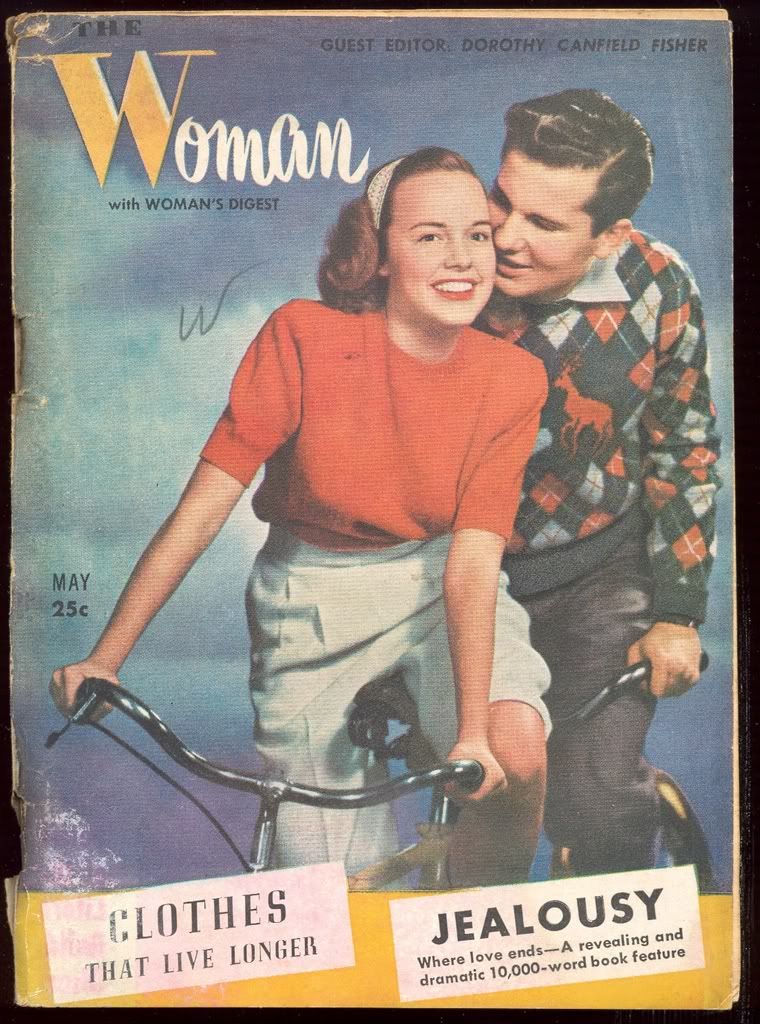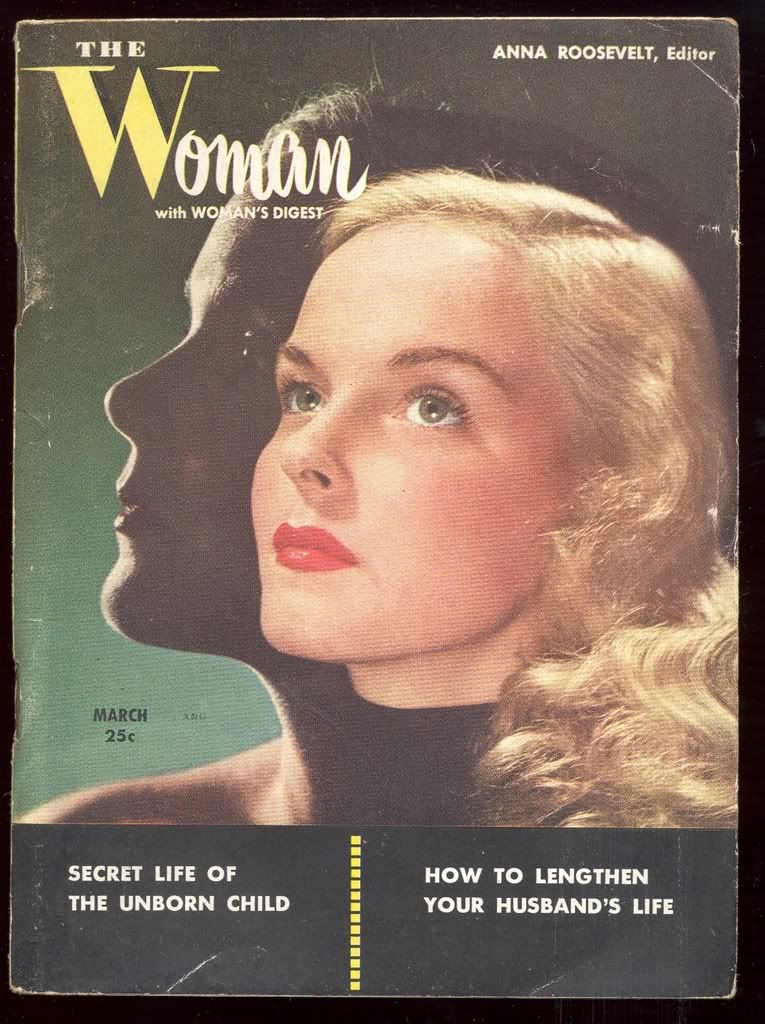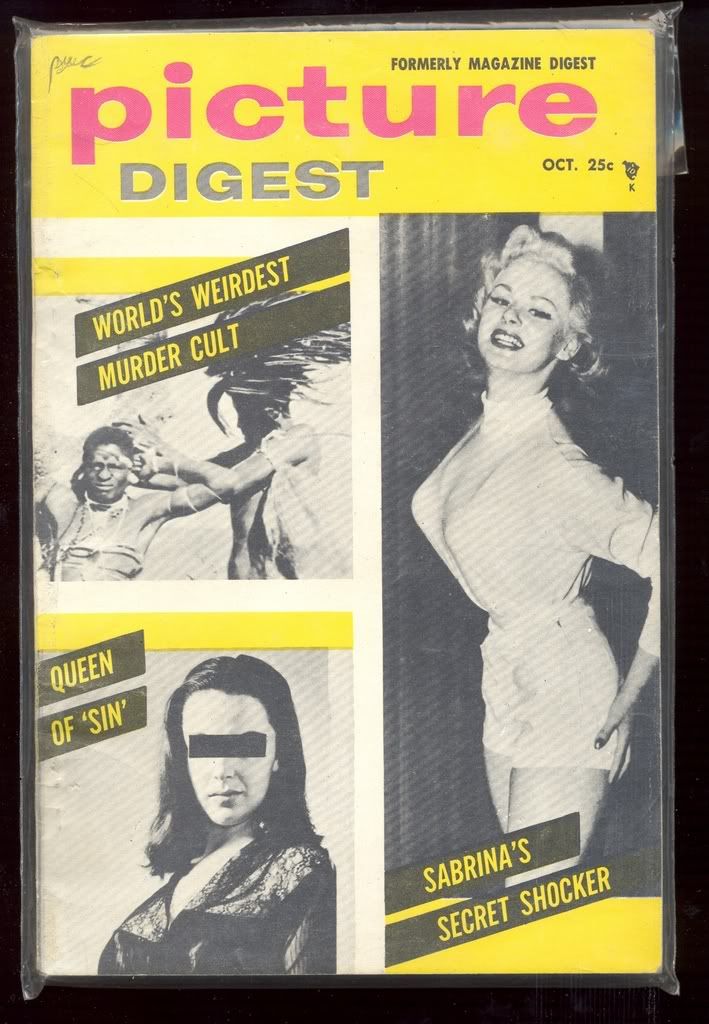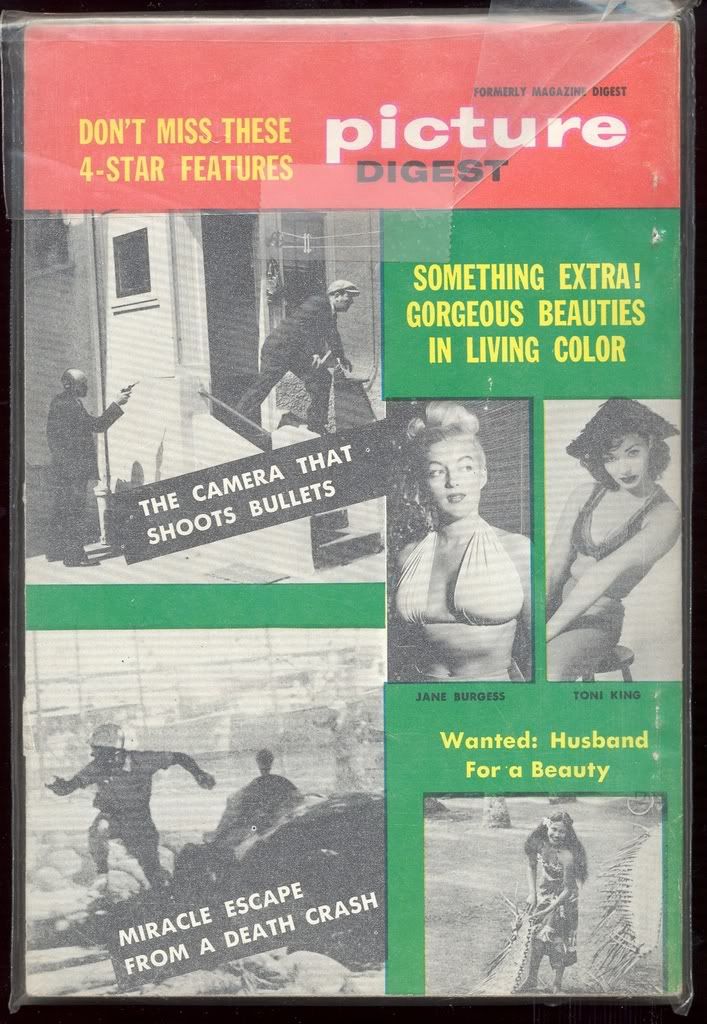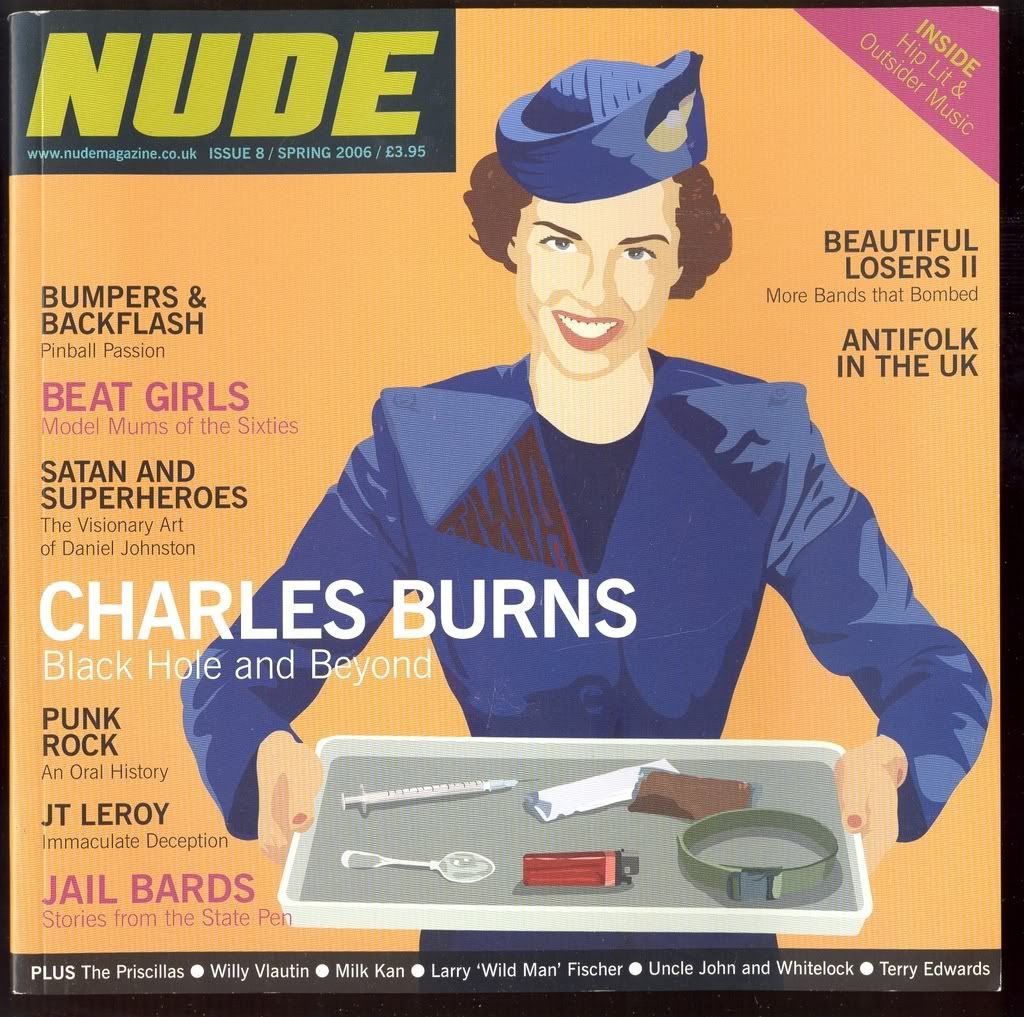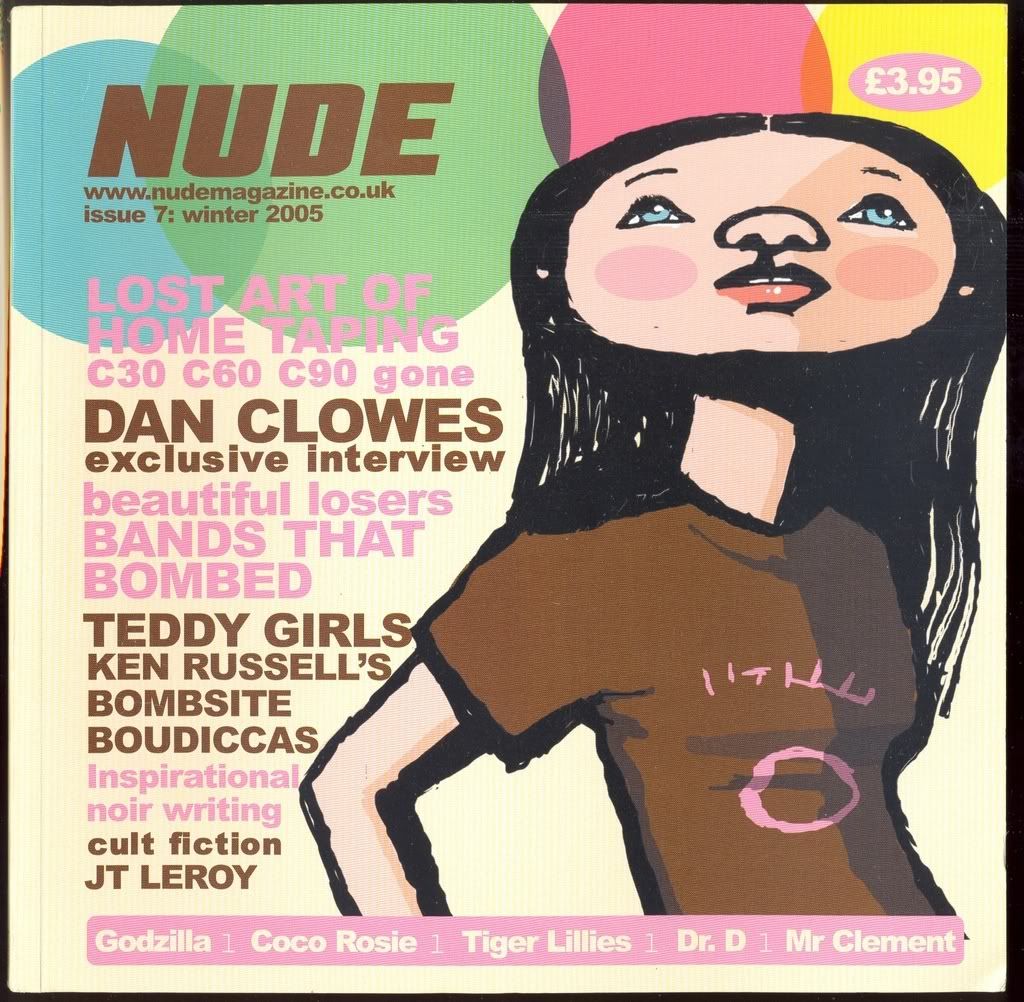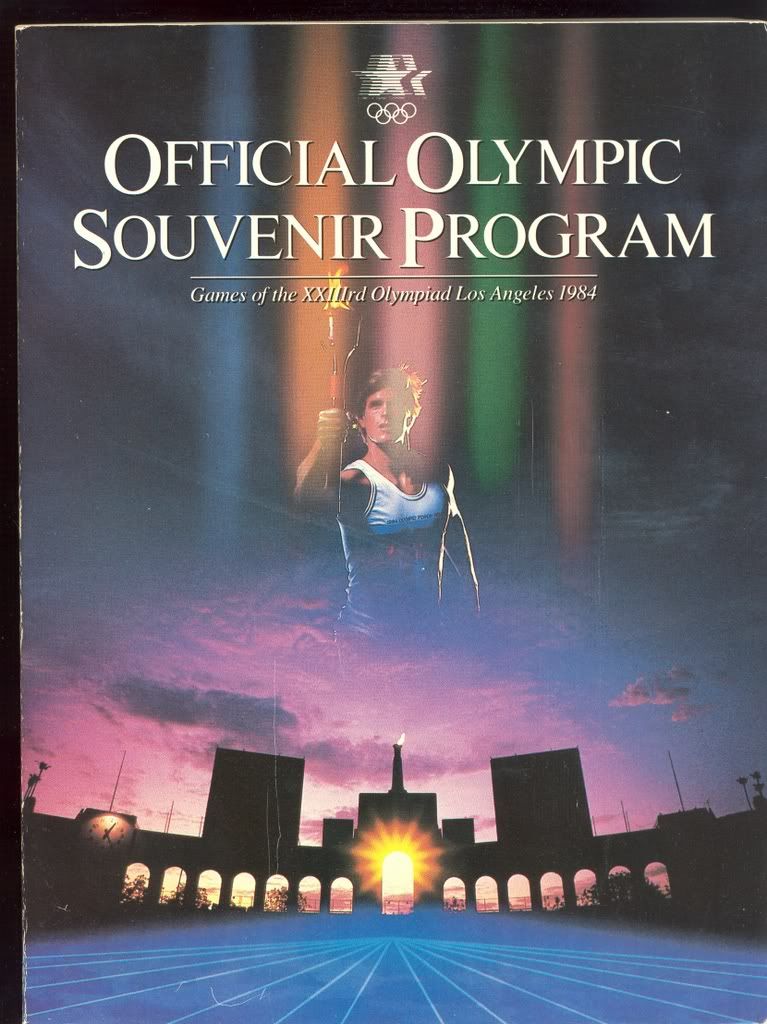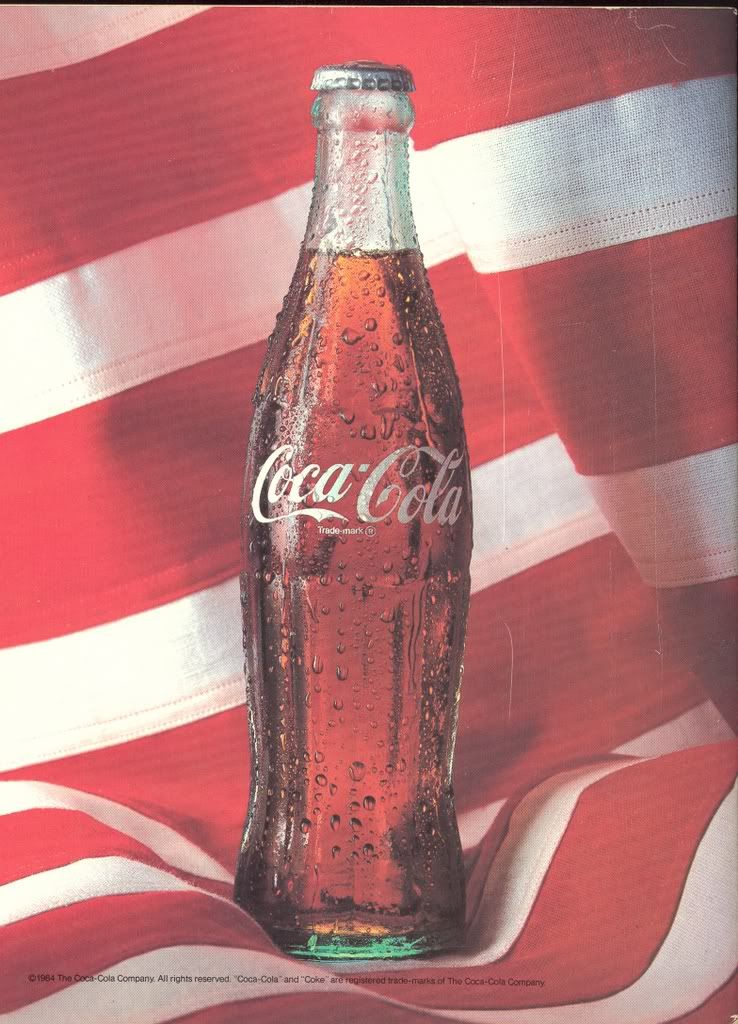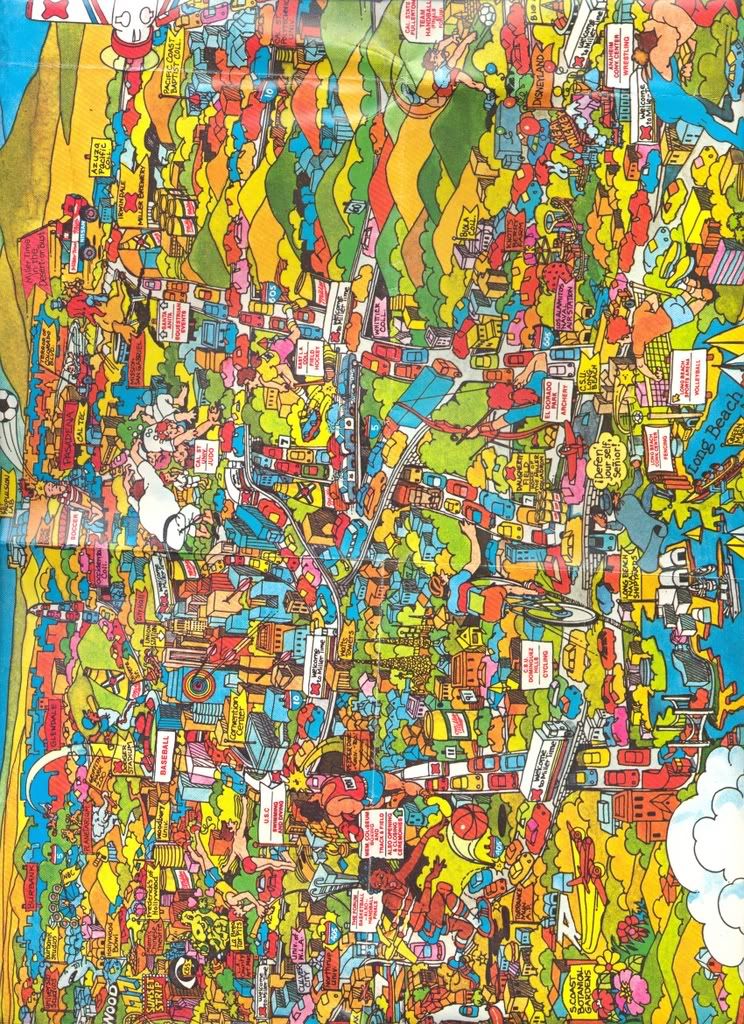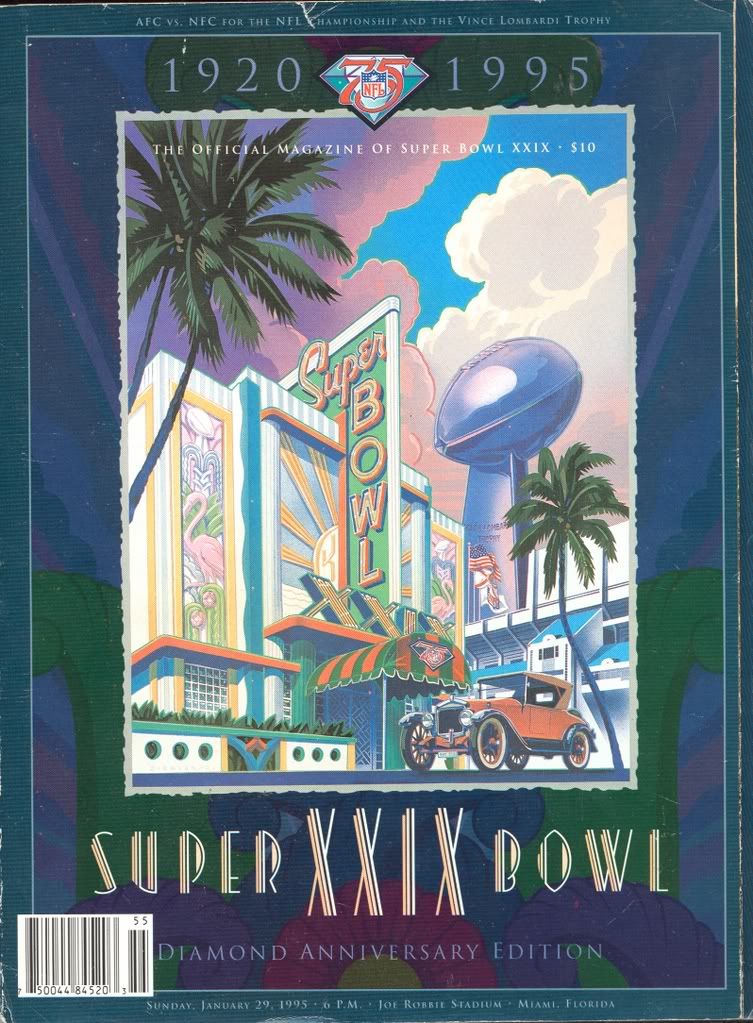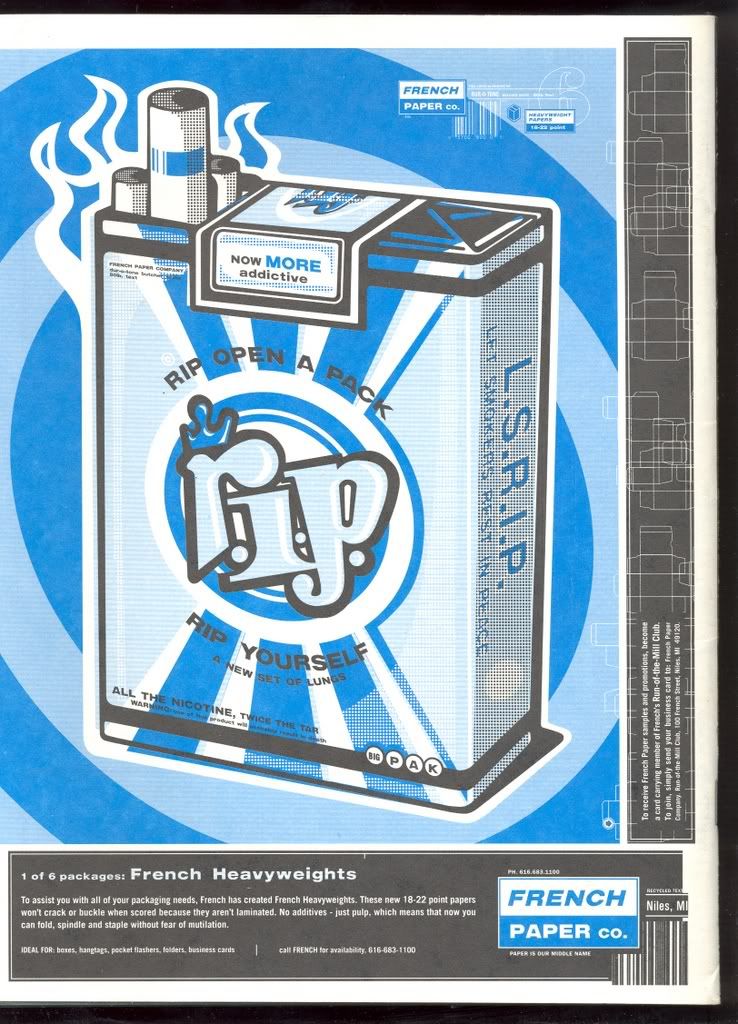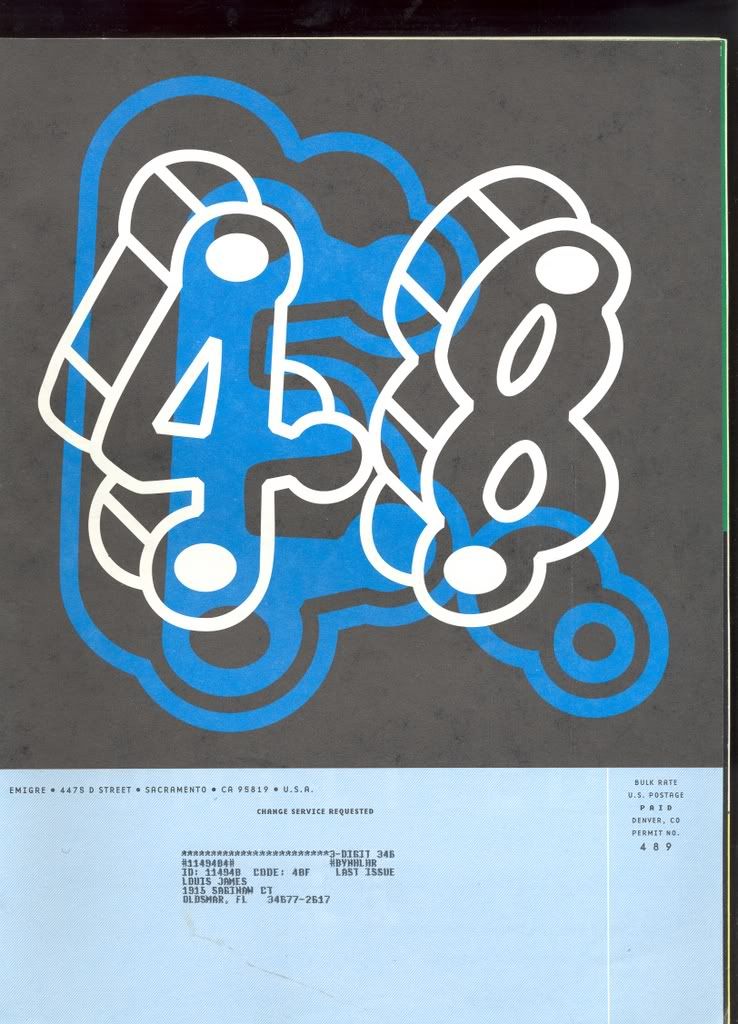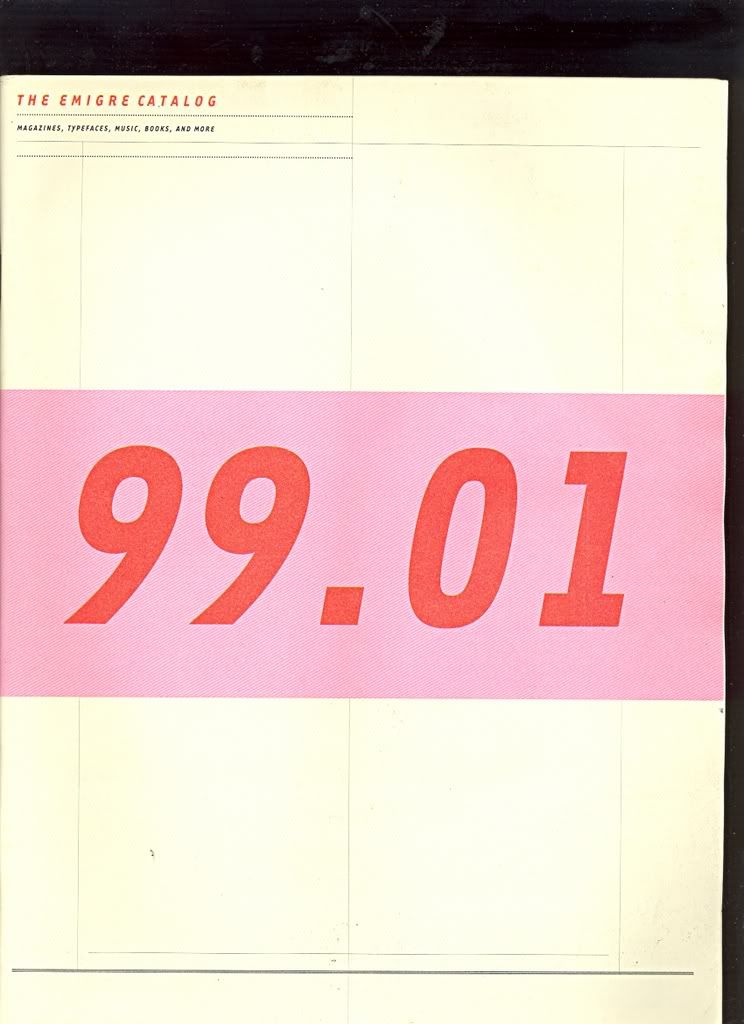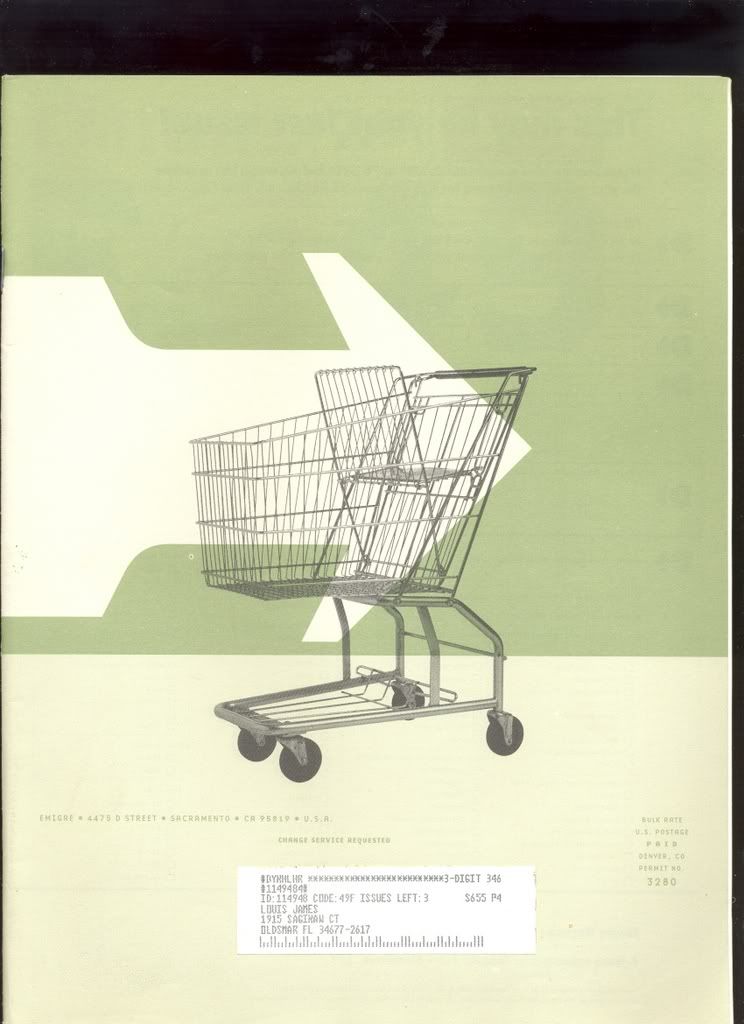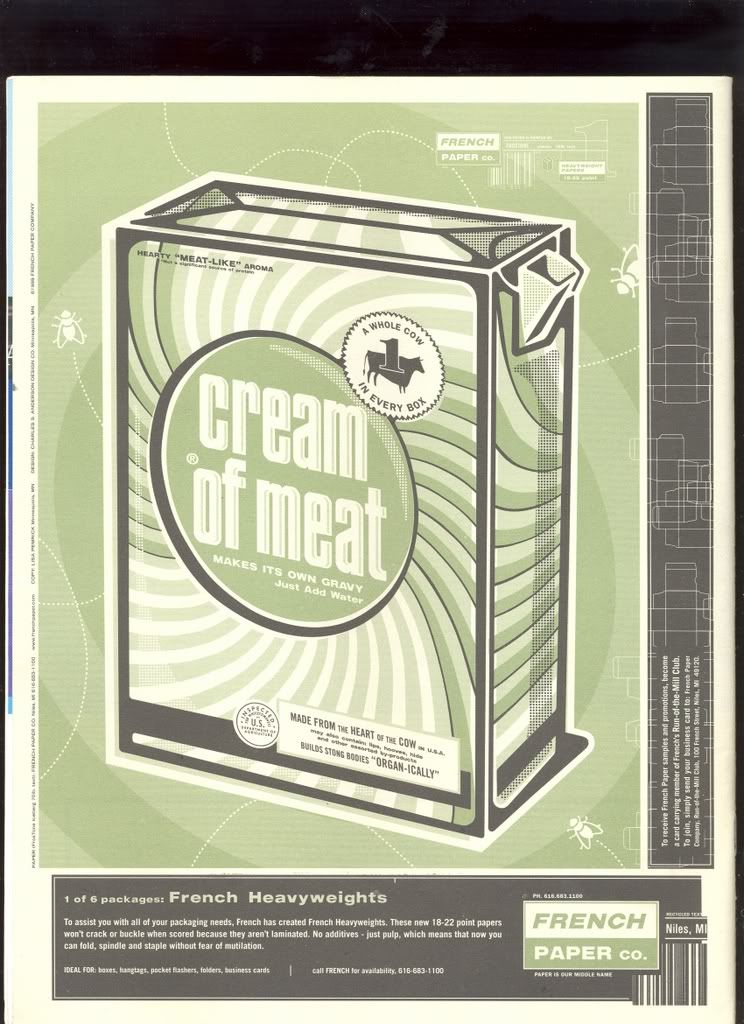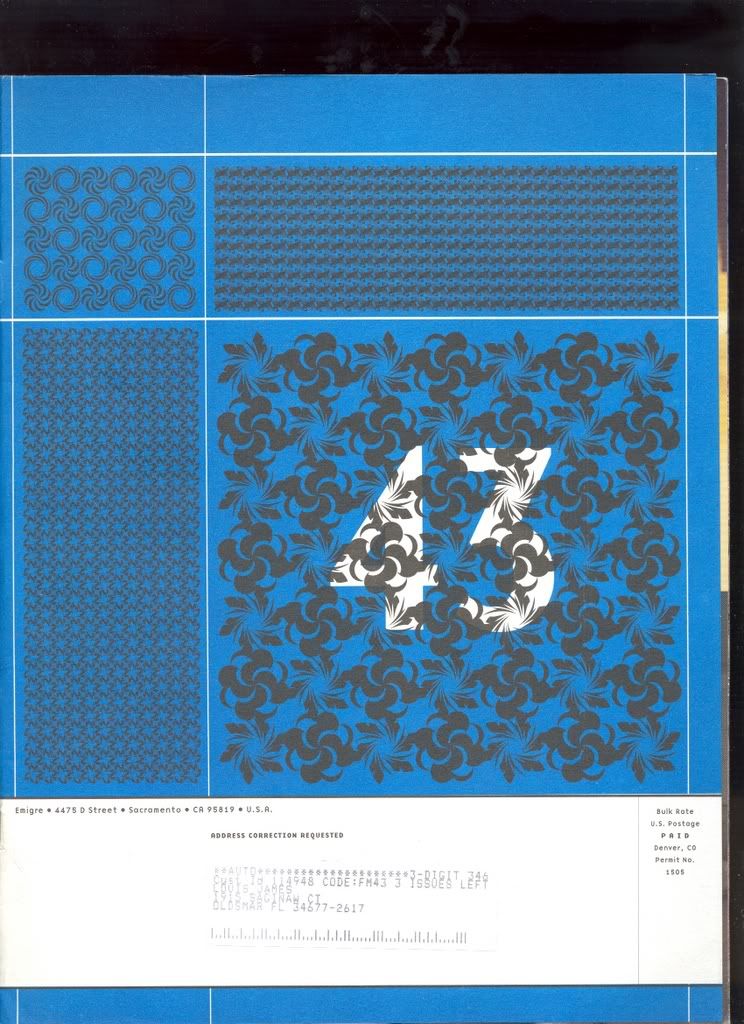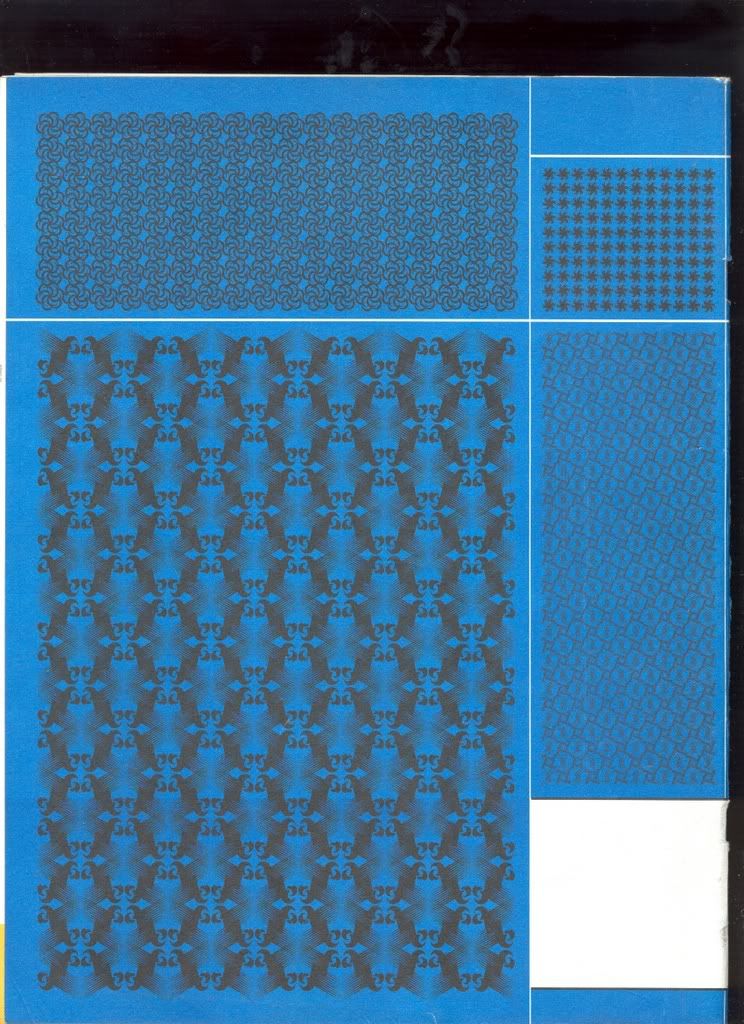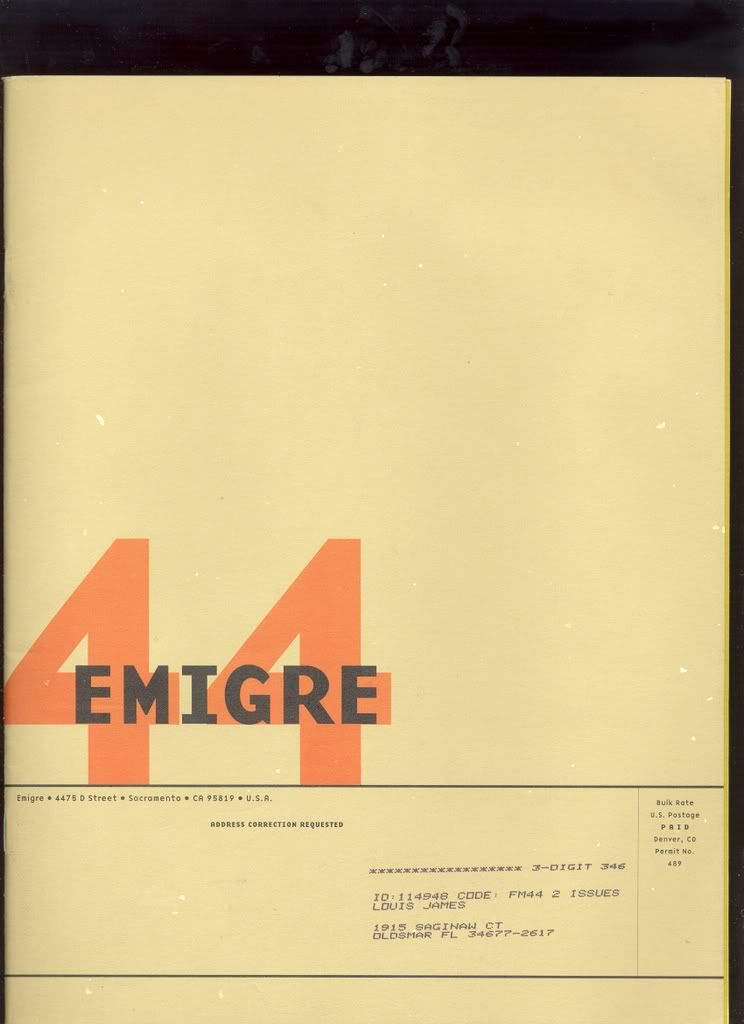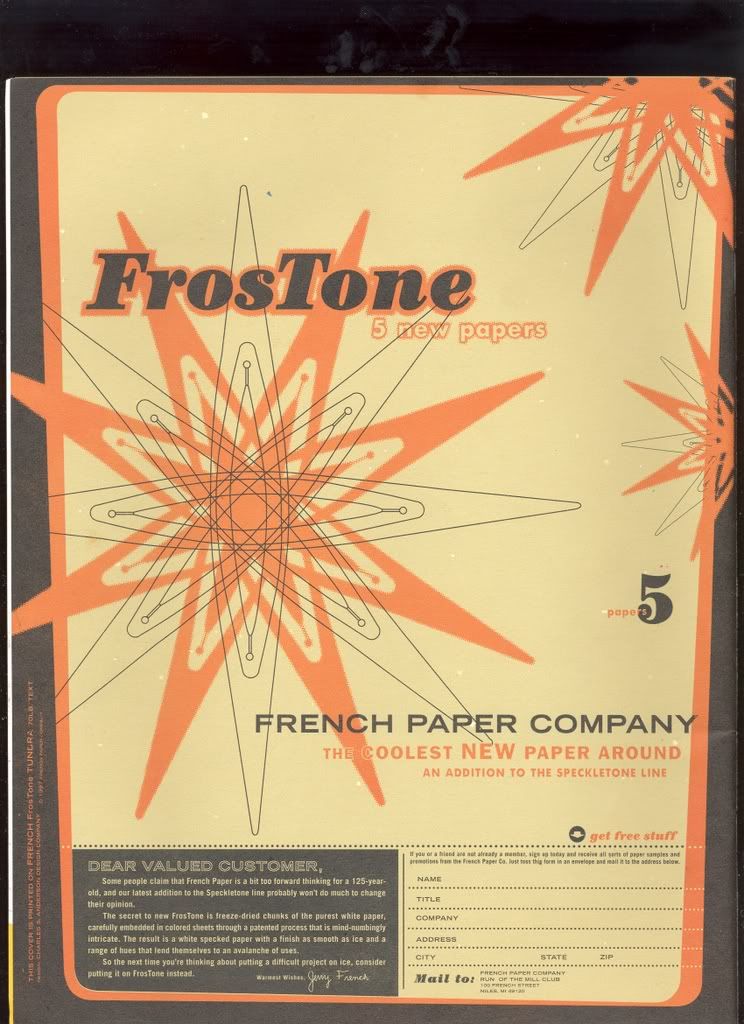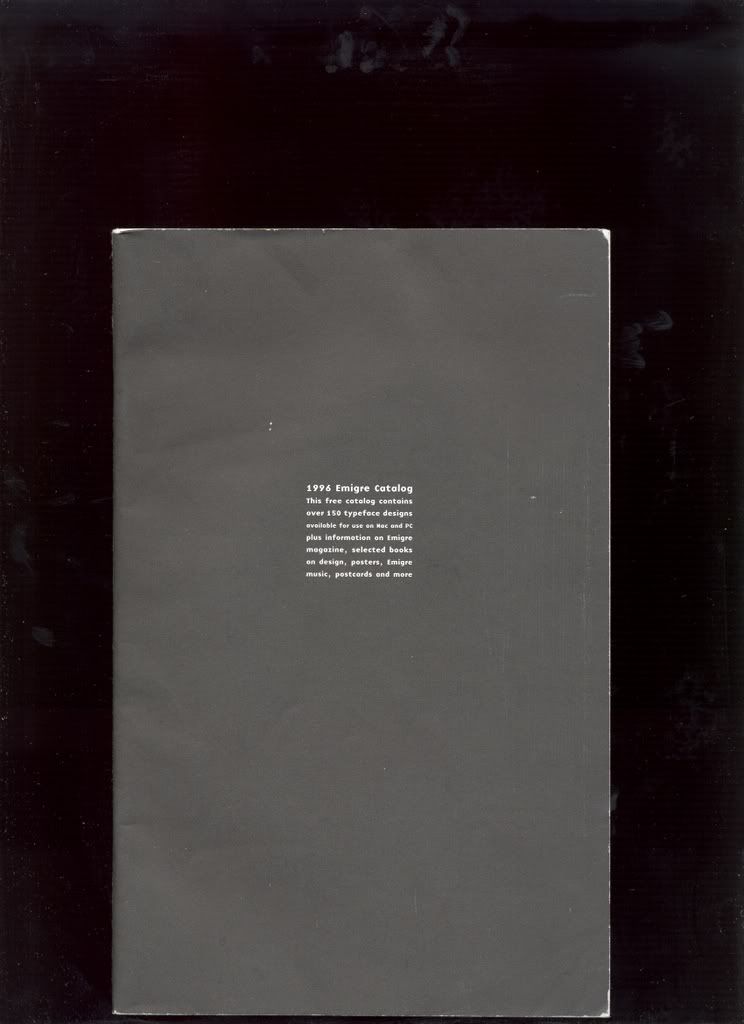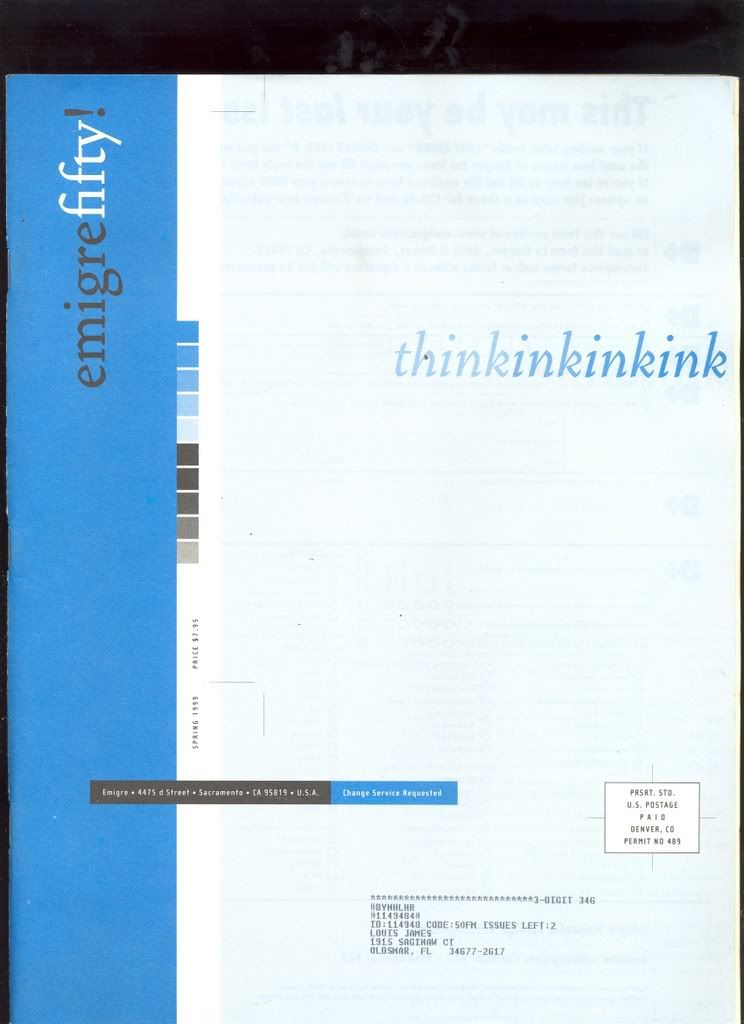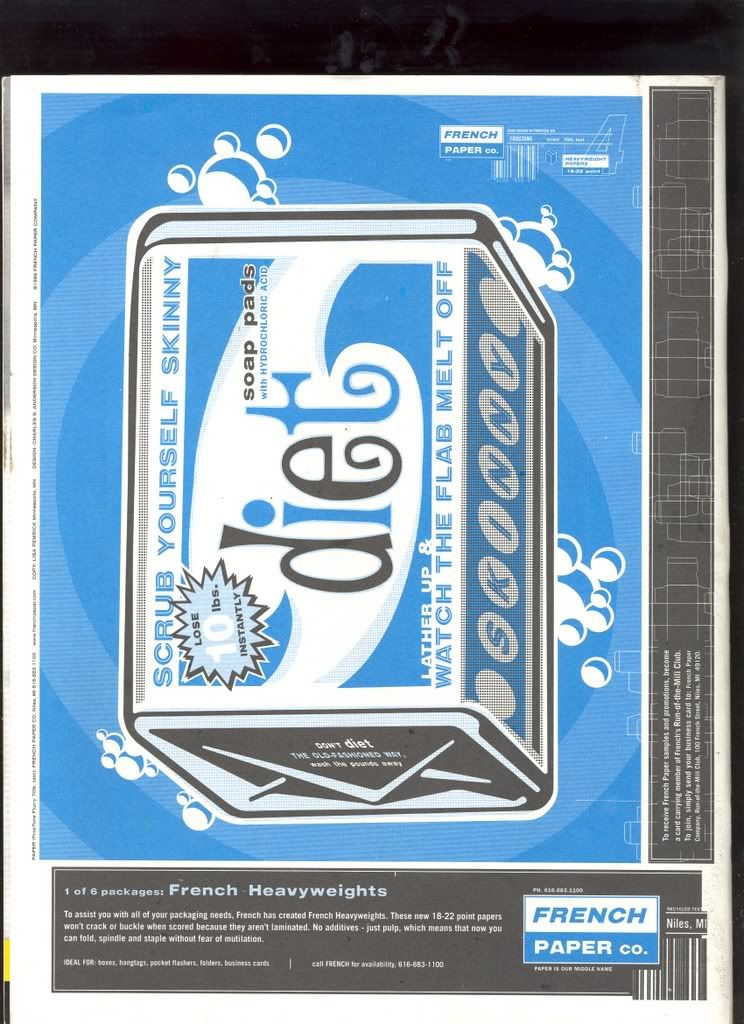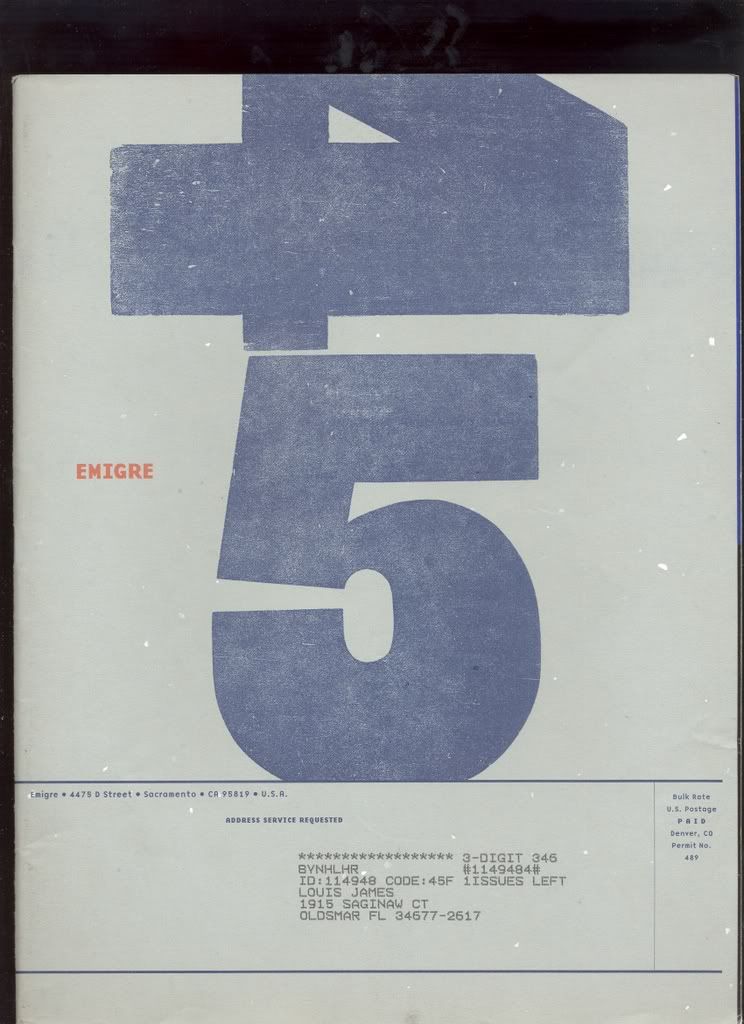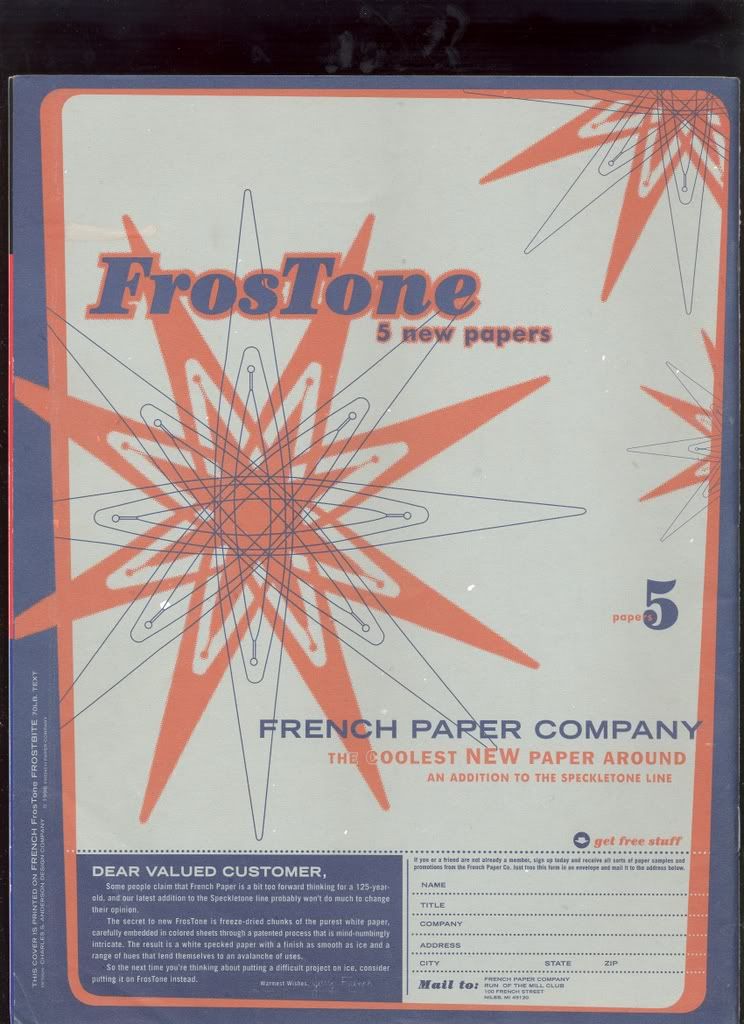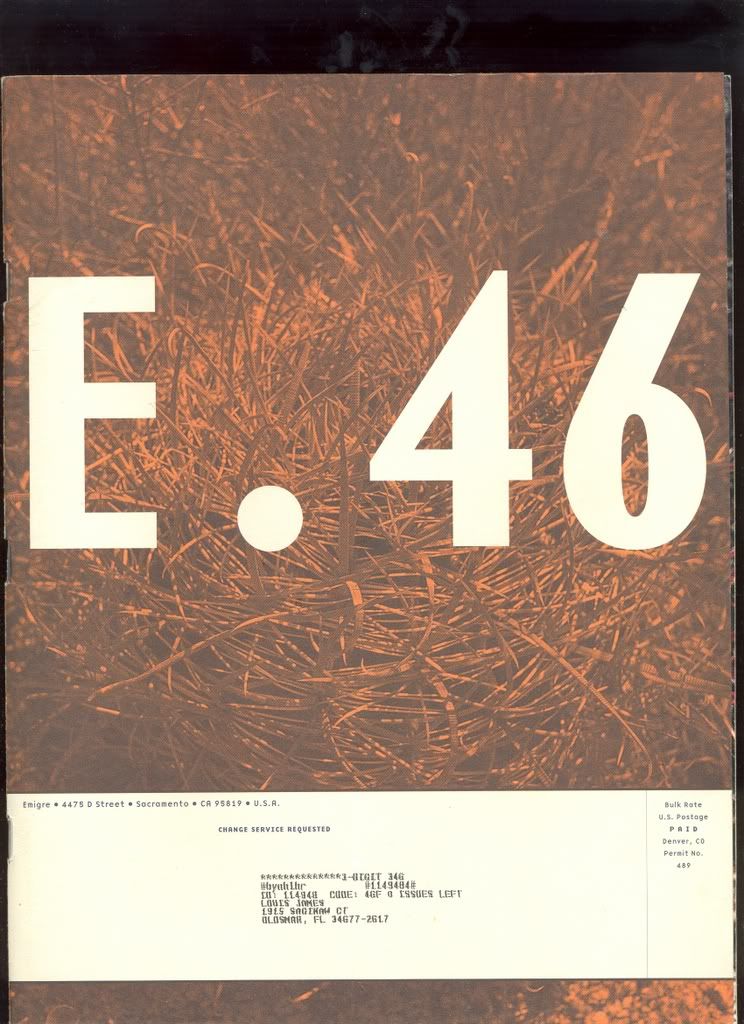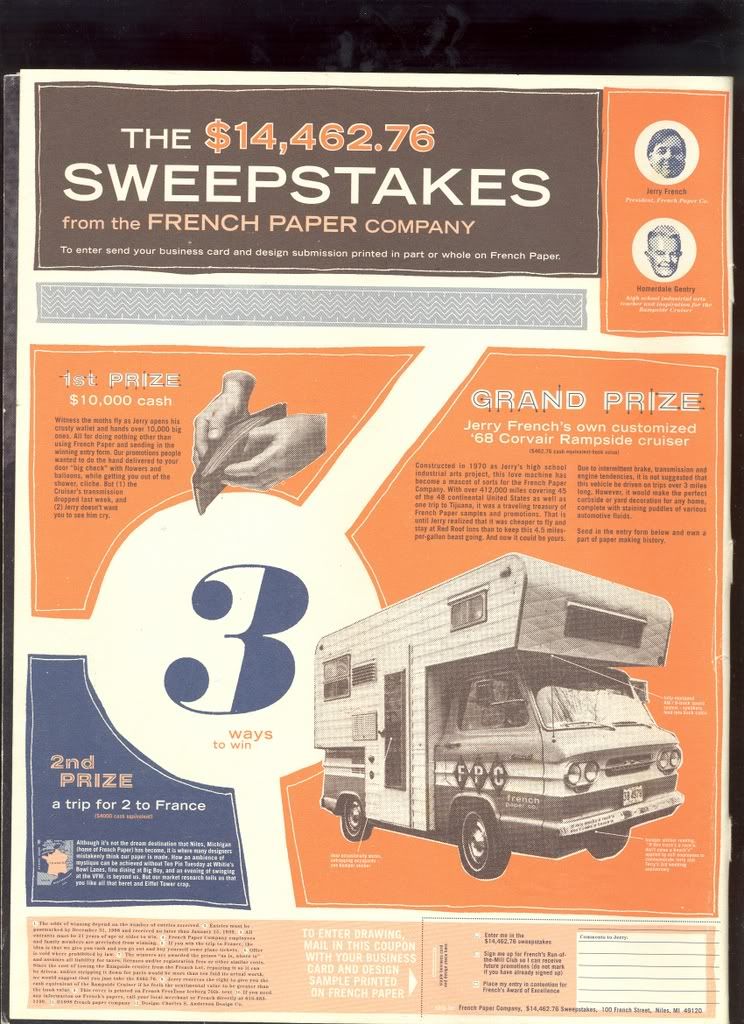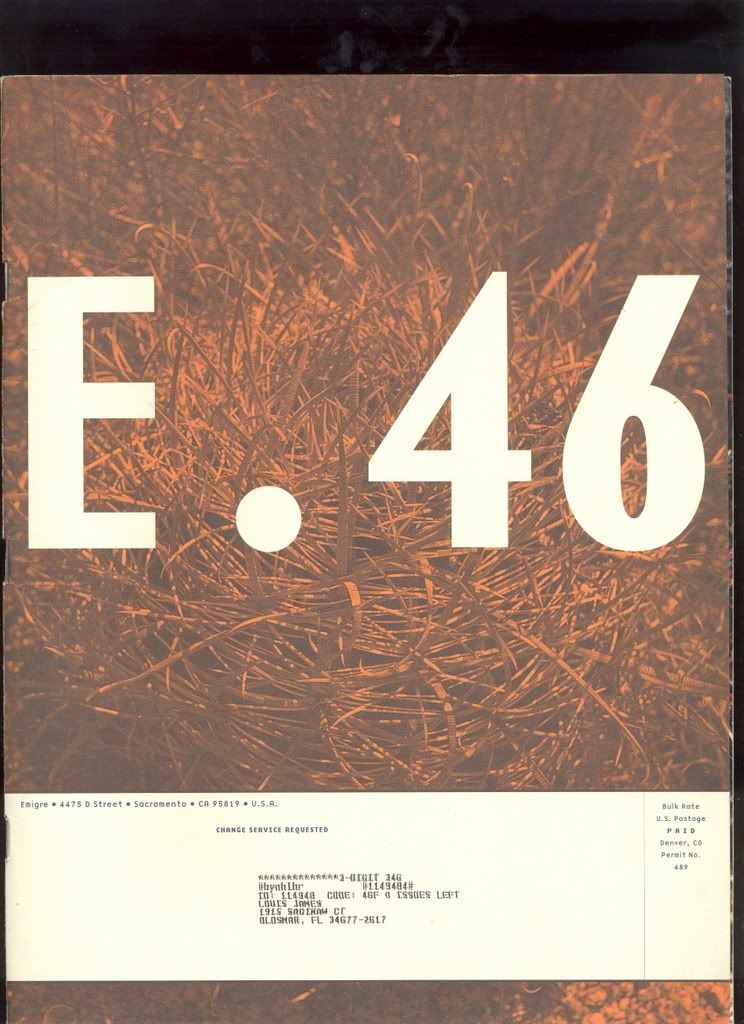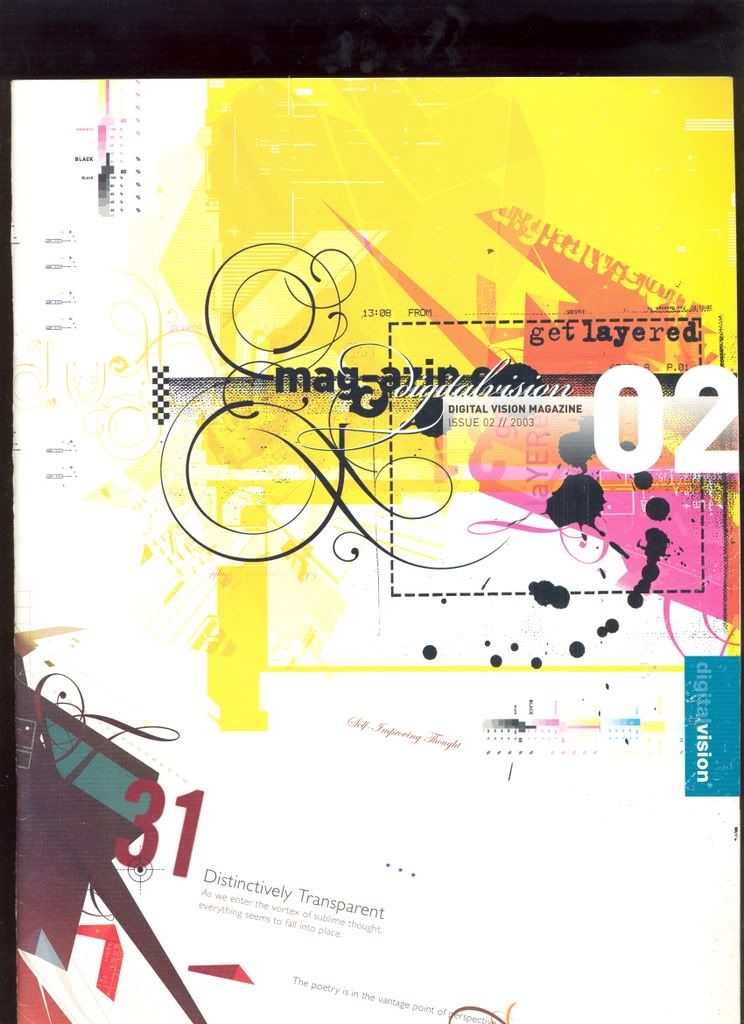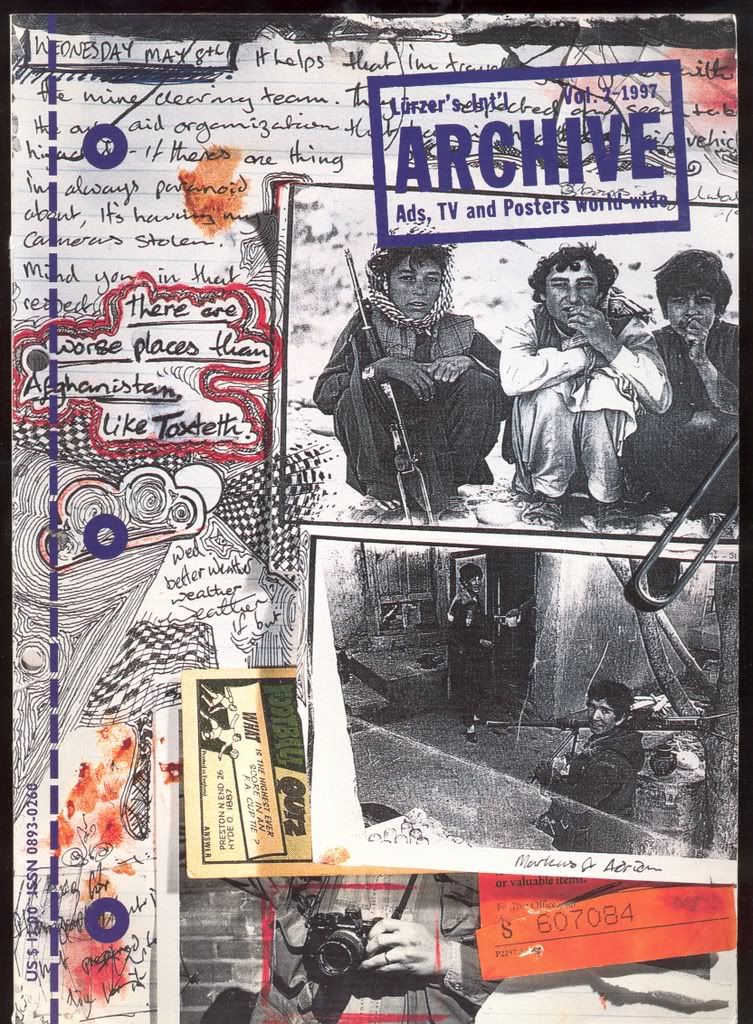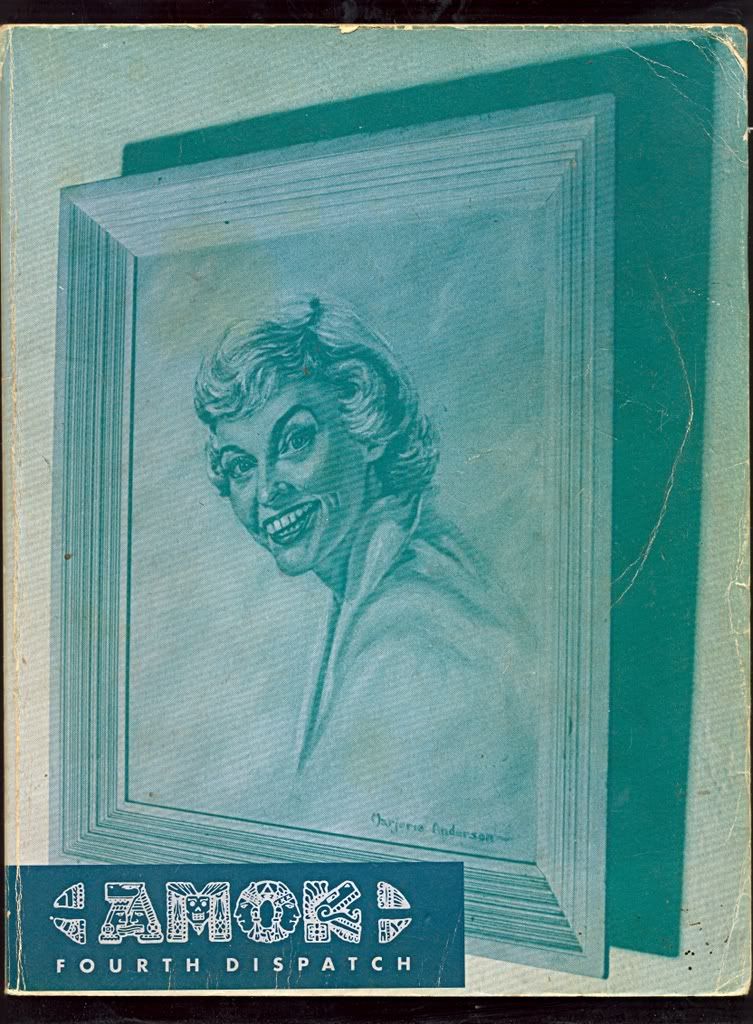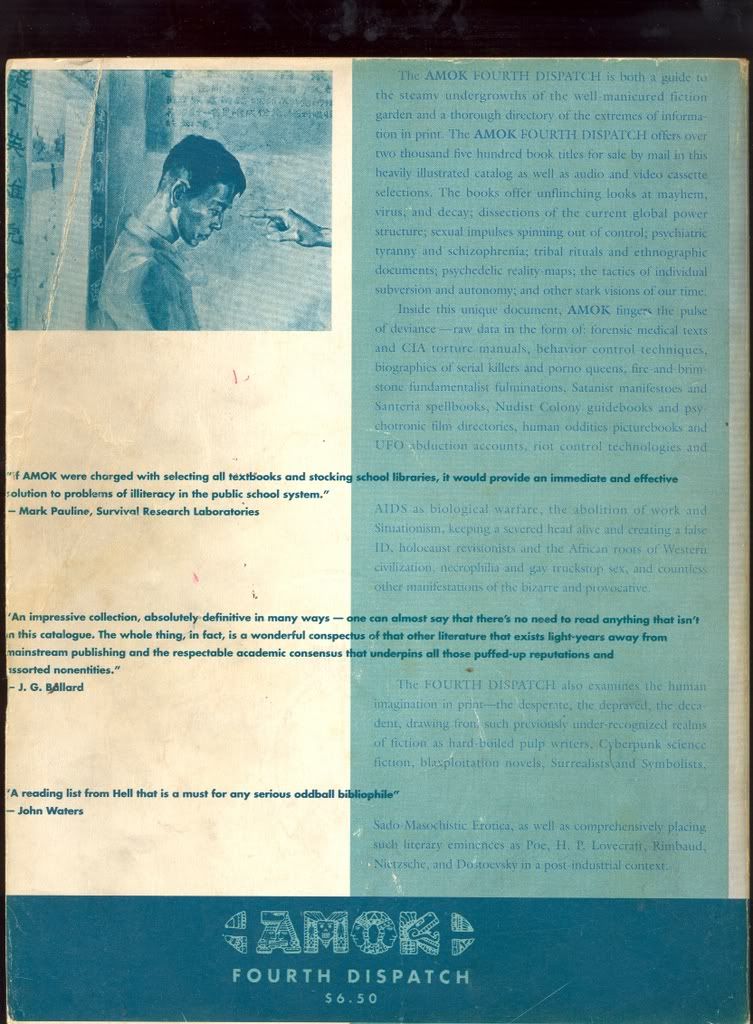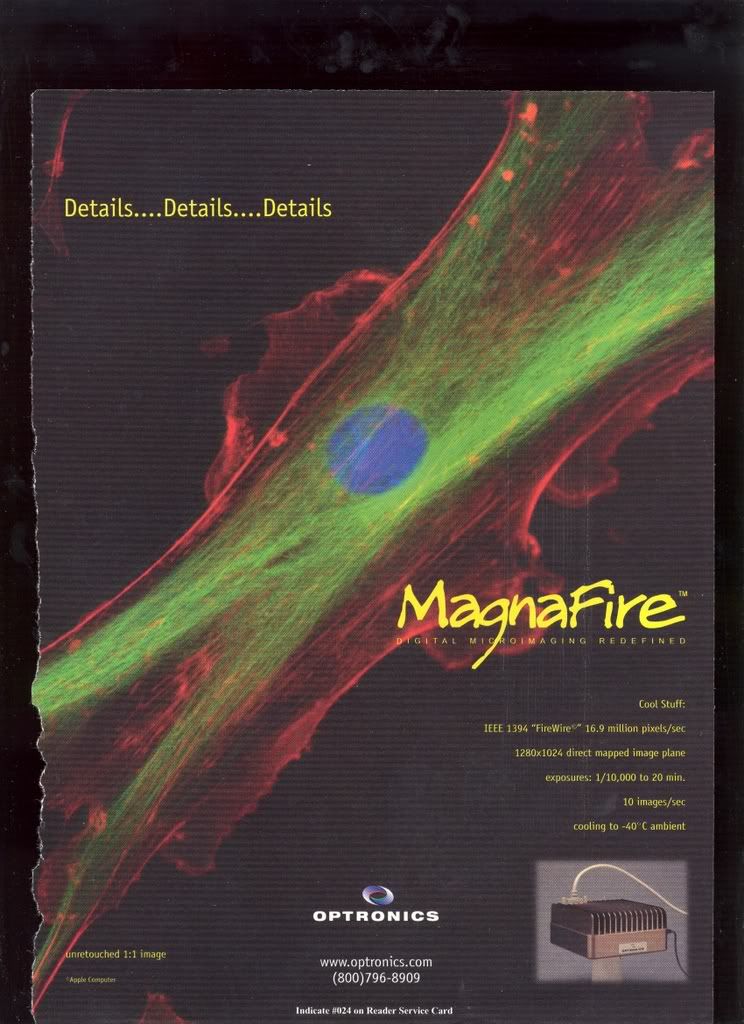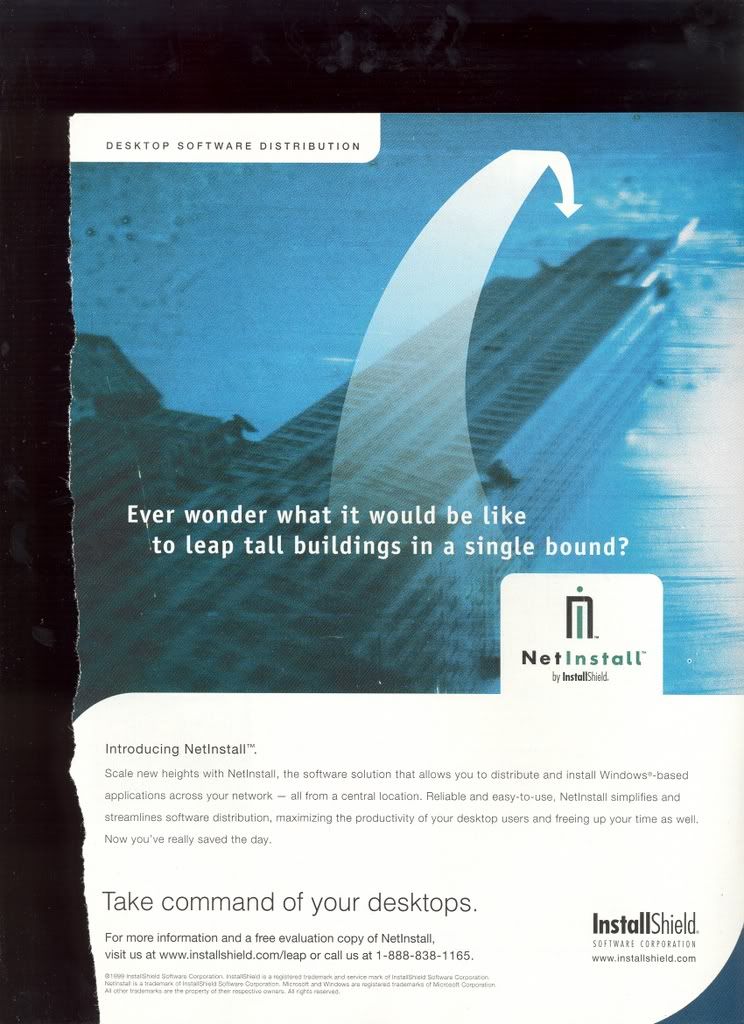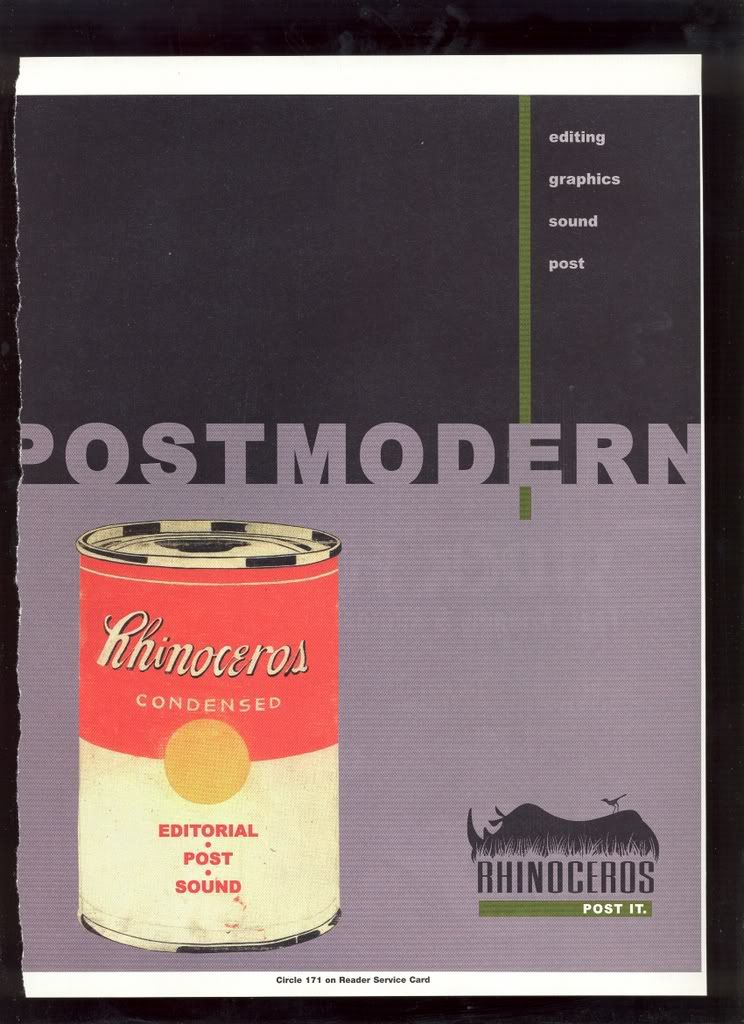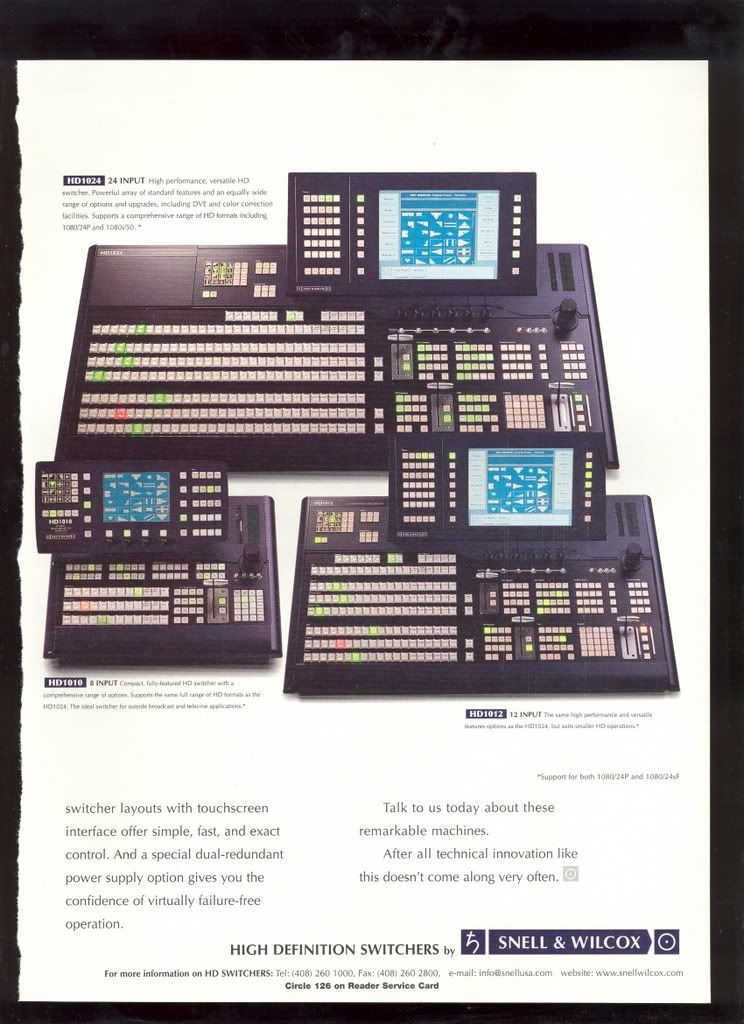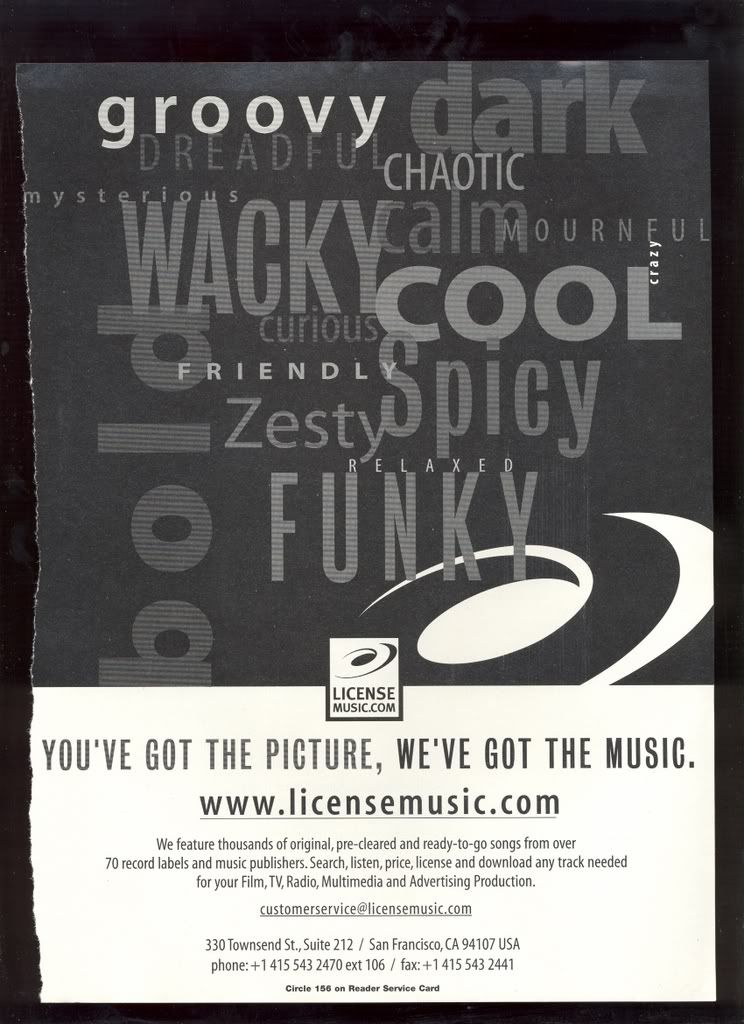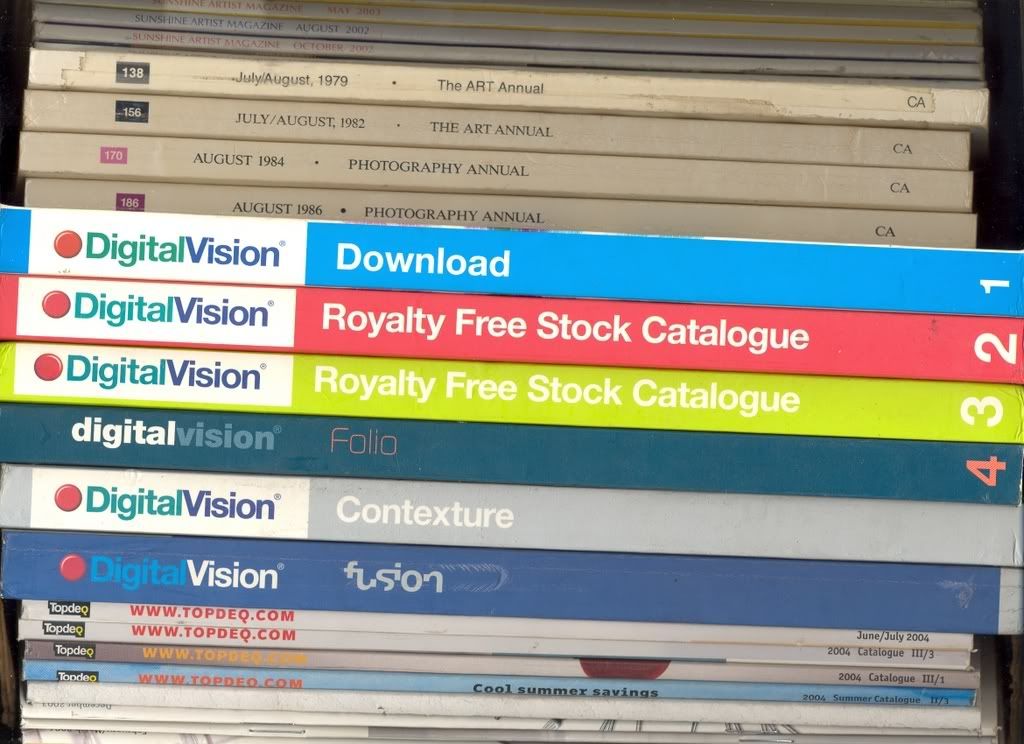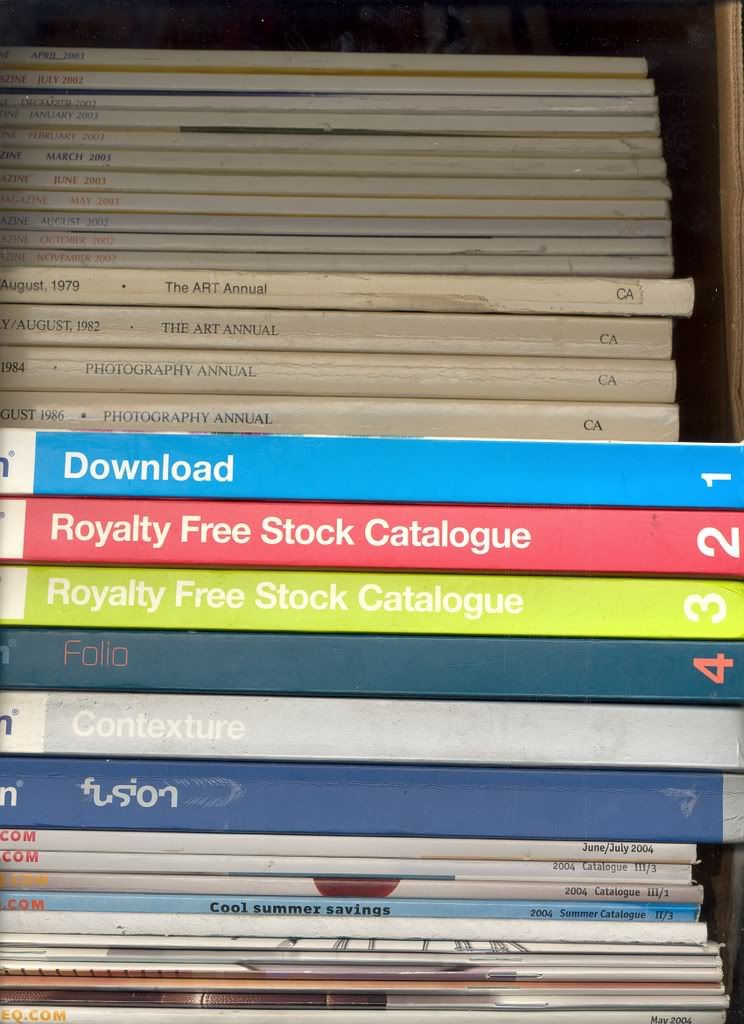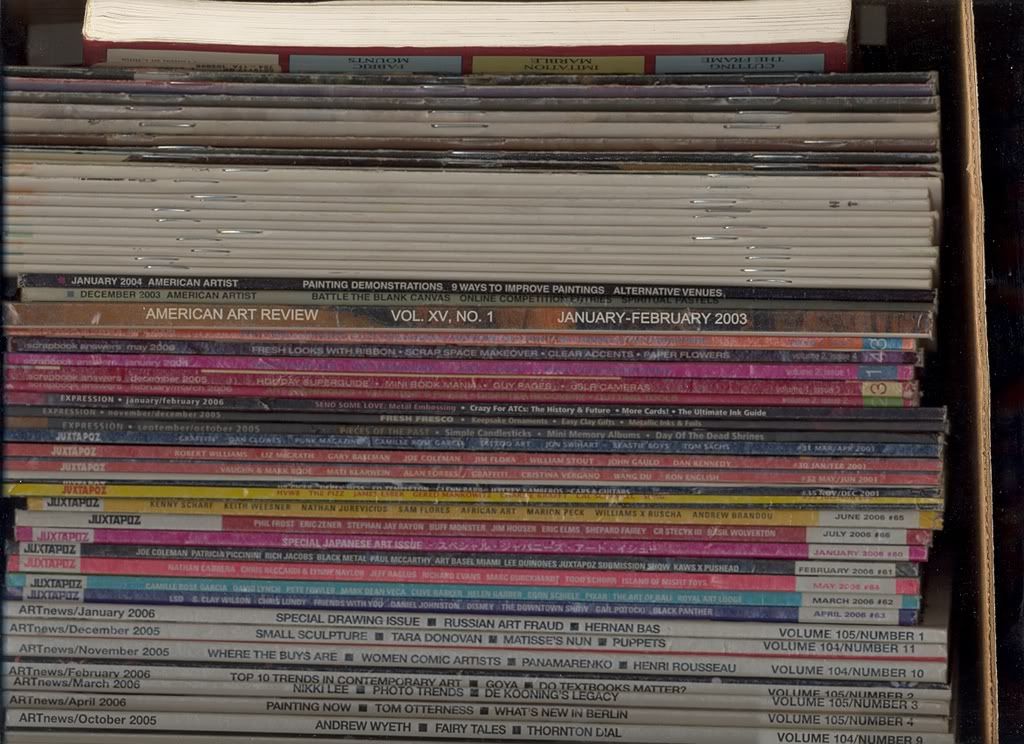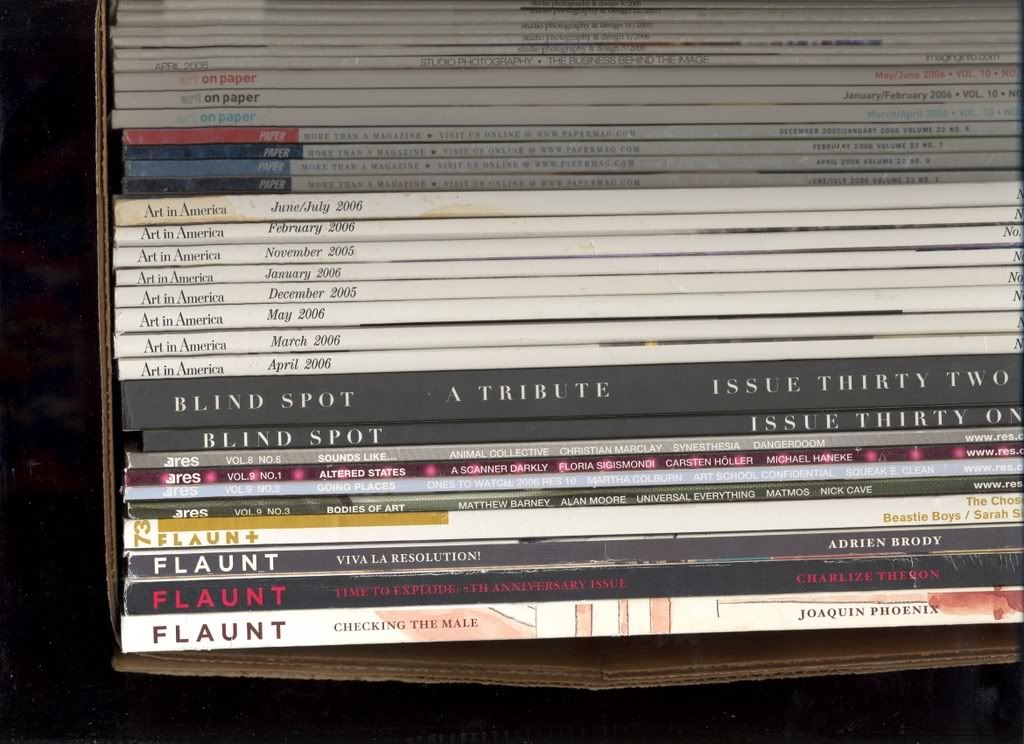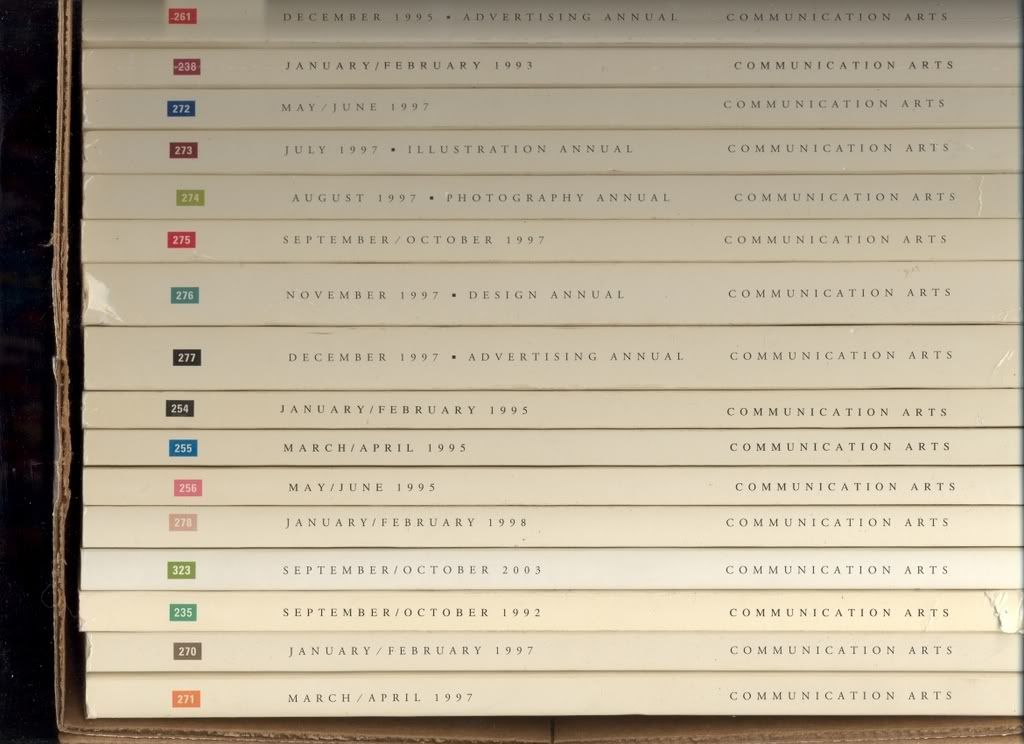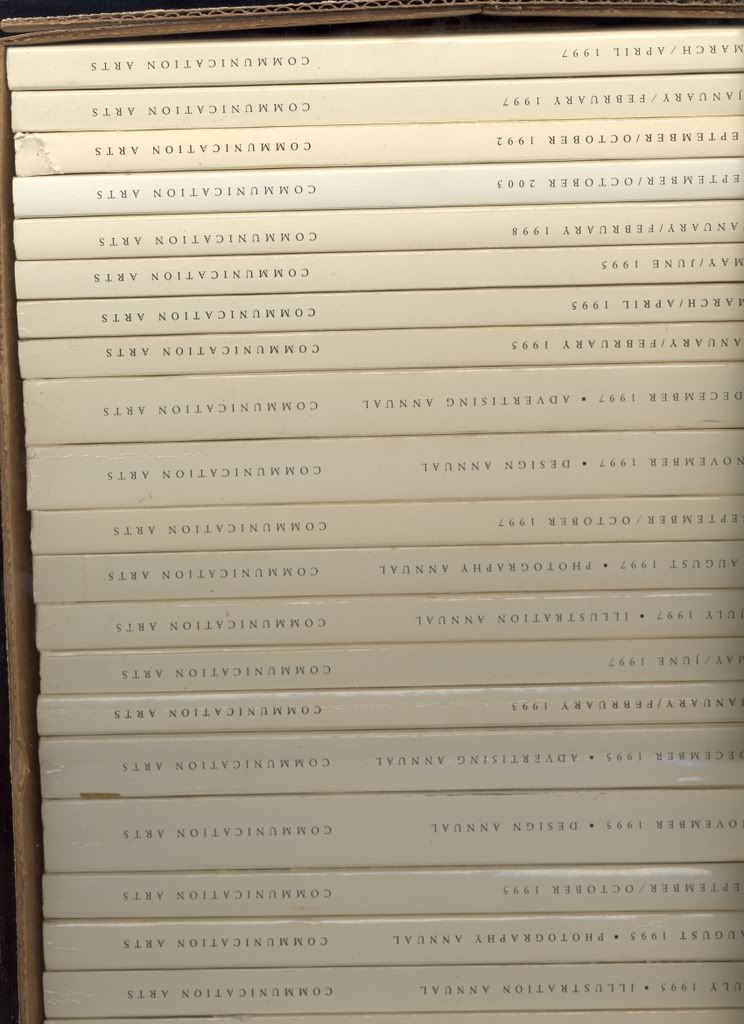Blogs and Posters
==================
Saturday, September 21, 2007
==================================================================================
At State Dept., Blog Team Joins Muslim Debate
By NEIL MacFARQUHAR
Two Arab-Americans have been hired to post on blogs and Internet forums in an effort to improve America’s image.
Published: September 22, 2007
http://www.nytimes.com/2007/09/22/washington/22bloggers.html?_r=1&th=&adxnnl=1&oref=slogin&emc=th&adxnnlx=1190467838-p3x1HgPQcMSpx0C1RYK1zA
WASHINGTON — Walid Jawad was tired of all the chatter on Middle Eastern blogs and Internet forums in praise of gory attacks carried out by the “noble resistance” in Iraq.
So Mr. Jawad, one of two Arabic-speaking members of what the State Department called its Digital Outreach Team, posted his own question: Why was it that many in the Arab world quickly condemned civilian Palestinian deaths but were mute about the endless killing of women and children by suicide bombers in Iraq?
Among those who responded was a man named Radad, evidently a Sunni Muslim, who wrote that many of the dead in Iraq were just Shiites and describing them in derogatory terms. But others who answered Mr. Jawad said that they, too, wondered why only Palestinian dead were “martyrs.”
The discussion tacked back and forth for four days, one of many such conversations prompted by scores of postings the State Department has made on about 70 Web sites since it put its two Arab-American Web monitors to work last November.
The postings, are an effort to take a more casual, varied approach to improving America’s image in the Muslim world.
Brent E. Blaschke, the project director, said the idea was to reach “swing voters,” whom he described as the silent majority of Muslims who might sympathize with Al Qaeda yet be open to information about United States government policy and American values.
Some analysts question whether the blog team will survive beyond the tenure of Karen P. Hughes, the confidante of President Bush who runs public diplomacy. The department expects to add seven more team members within the next month — four more in Arabic, two in Farsi and one in Urdu, the official language of Pakistan.
The team concentrates on about a dozen mainstream Web sites such as chat rooms set up by the BBC and Al Jazeera or charismatic Muslim figures like Amr Khaled, as well as Arab news sites like Elaph.com. They choose them based on high traffic and a focus on United States policy, and they always identify themselves as being from the State Department.
They avoid radical sites, although team members said that jihadis scoured everywhere.
The State Department team members themselves said they thought they would be immediately flamed, or insulted and blocked from posting. But so far only the webmaster at the Islamic Falluja Forums (www.al-faloja.info) has revoked their password and told them to get lost, they said.
Not that they don’t attract plenty of skeptical, sarcastic responses. One man identifying himself as an Arab in Germany commented that they were trying to put lipstick on a pig. During Congressional testimony last week by Gen. David H. Petraeus, for example, the two-man team went into chat rooms to ask people their opinion.
“God bless America, the giving mother,” went one sarcastic response, going on to say that everything the United States does goes into “the balance of your pockets, I mean the balance of your rewards.” Another noted that Iraqis were better off before the invasion, while a third jokingly asked the Digital Outreach Team for a green card.
Mr. Jawad’s responses tend toward the earnest: “We do not deny that the situation in Iraq is difficult, but we are achieving success in decreasing the level of violence there with the contribution of the Iraqis who care about their nation and who reject the terrorists and killers who target their victims based on sect,” he wrote at one point. He directed the green card writer to the Web sites describing how to apply.
Mr. Jawad and his colleague, Muath al-Sufi, are circumspect about biographical details that would allow readers to pigeonhole them by their roots, religion or education. Mr. Jawad, would only say that he is in his 30s, was born in Texas and raised around the Arab world. Mr. Sufi also said he was in his 30s.
The team said certain topics repeated regularly, including arguments over the accusations that American soldiers tortured Iraqis at Abu Ghraib and President Bush’s comment that the fight against terrorism is a “crusade.” Much time is also spent trying to douse the Internet brush fires that erupt whenever prominent Americans from talk-show hosts to politicians make anti-Muslim remarks of the “bomb Mecca” variety.
Each response is carefully shaped in English by the team and translated into often poetic Arabic.
“We try to put ourselves in the mindset of someone receiving the message,” said Duncan MacInnes, the director of the Counterterrorism Communication Center, of which the Digital Outreach Team is one branch. “Freedom for an Arab doesn’t necessarily have the same meaning it has for an American. Honor does. So we might say terrorism is dishonorable, which resonates more.”
Analysts said they had been surprised by the positive response, with people seemingly eager to engage, although the overall impact was impossible to assess. “They are not carrying the slogans of liberalization or democratization across the region,” said Adel al-Toraifi, a Saudi political analyst. “They are talking about peace and dialogue, and I think that makes it difficult for those debating them to justify criticizing them.”
Mr. Toraifi said the postings had generated some debate in the Arab world and had been the subject of a column in an Algerian newspaper lauding the State Department for discussing policy with ordinary people, something the writer said the Algerian government would never do.
Indeed, several analysts said having State Department employees on the Web helps to counter one source of radicalization — the sense that Washington is too arrogant to listen to the grievances of ordinary Arabs, so violence is the sole means to attract attention.
Mr. Jawad and Mr. Sufi say that in their roughly two dozen weekly postings they avoid all religious discussions, like whether jihad that kills civilians is legitimate. They even steer clear of arguments, instead posting straightforward snapshots of United States policy.
Mr. Jawad is often maligned as a “U.S. agent,” including by Radad, the man of the “just Shiites” remark. After Mr. Jawad wrote that all life was equally worth preserving, part of the man’s response was, “Don’t you think an agent of Arab nationality deserves to be killed?”
Mr. Jawad wrote back in part, “It seems to me that many people are quick to offer judgments based on political views so those who oppose them are always agents and infidels. Which leads to law of the jungle, which is not just, but chaotic.”
==================================================================================
COLORIZING Do movie posters do much to fill theater seats? Armin Vit, a graphic designer, believes they may. Many of the top films have had dark-hued posters. It is, he wrote on Under Consideration, a Web site for graphic designers, “telling that black is the color of choice in movie posters.” In his review of posters for popular films, the only exceptions were G-rated films (underconsideration.com).
++++++++++++++++++++++++++++++++++++++++++++++++++++++++++++++++++++++++++++++++++
Smashing Posters
By STEVEN HELLER
Published: December 5, 2004
The vibrating colors and illegible typographic lettering of psychedelic concert posters in the late 60's gave us a universal graphic language for the hippie sex, drugs and rock 'n' roll era. Posters were designed to advertise bands, appeal to aficionados and offend everyone else. Hip-capitalist entrepreneurs, however, quickly reduced real psychedelia to a youth-culture style that sold everything from tie-dyed neckties to Volkswagen vans. The coffin was nailed when psychedelic lettering popped up on TV in the logo for ''The Dating Game.'' An era was over. What came next, in the 70's, was punk music -- and an anarchic graphic sensibility typified by D.I.Y. (Do It Yourself), a deliberately clumsy hodgepodge of images that were cut and pasted and frequently stolen and photocopied. Punk was known for its ransom-note aesthetic, introduced by Jamie Reid on his record sleeves for the Sex Pistols; this stuff broke the tenets of legibility but telegraphed clear-coded messages to its audience. In the years since, rock posters have come to embrace a wide range of raucous comic styles and typographies -- as well as frequent parodying of, and homages to, passe fashions (including psychedelics) -- intended to convey moods and make statements that are often satirically political.
The most important reason for the popularity of what are now called ''gig posters,'' according to Paul Grushkin and Dennis King in their lavish new book, ART OF MODERN ROCK: The Poster Explosion (Chronicle, $60; after Feb. 28, $75), has been the flourishing of indie music and the extinction of the old-fashioned album cover. With the introduction of compact discs in the 80's, which shrank cover art to small squares -- and now with the increase in downloadable computer files, which eliminate the need for covers altogether -- posters not only advertise but logo-ize the artists. They are, moreover, complementary artistic experiences that make the music visually concrete and send other messages. Since posters are more displayable than CD's and are highly collectible, they serve both as mnemonics for the bands and as emblems of fan loyalty. Thus, a subculture of idiosyncratic poster studios and artists, including Frank Kozik, Art Chantry, Yee Haw Industries and Digital Toolbox, is about as well known among certain fans as are Wilco, Pearl Jam, Tom Waits, Marilyn Manson and other subjects of their work.
Grushkin and King suggest that many of these posters are not as ephemeral as the paper they're printed on. While some are spat out of the computer as laser prints, a good number are done as durable silk-screens of museum quality. Thanks to the Internet, old and new posters are available in downloadable files on interactive sites like gigposters.com, where posters, artists and music are hotly critiqued. This book contains some 1,800 posters; not all of them represent the highest levels of concept or craft, but one thing is certain -- few are subtle. With bold color, expressionist drawing, strident collage and ghoulish rendering of the sacred and the profane, these posters are designed to grab attention and kick out the jams.
A poster from ''Art of Modern Rock'': ''Que Dios Nos Perdone,'' by Frank Kozik, 1988
A poster from ''Art of Modern Rock'': ''Sub Pop Ultra Lame Fest,'' also by Kozik, 1992.
A poster from ''Art of Modern Rock'': ''Belly Up,'' by Scrujo, 2002
++++++++++++++++++++++++++++++++++++++++++++++++++++++++++++++++++++++++++++++++++
Posters From the Edge
By CHRISTINE MUHLKE
Published: October 10, 2004
Before you call Keith Knight, you'll need the movie poster that says ''You, You, You.'' Posteritati, a shop east of SoHo (go to www.posteritati.com), is the place to start. With more than 12,000 original posters, it's where a music-video director can express himself with a 1957 Polish ''Godzilla'' poster; the ingenue can find a kitschy Japanese affiche for ''Bedazzled'' featuring Raquel Welch; or a sci-fi animator can choose a Romanian ad for ''Beneath the Planet of the Apes.''''Directors, executives and actors come here for wrap gifts and starting-production gifts,'' says the owner, Sam Sarowitz. ''Then there are the serious collectors,'' like Martin Scorsese. (And then there are those who would pay $35,000 for an Argentine ''King Kong'' original.) Until Nov. 7, the shop will run the exhibition ''Rebels, Rockers and Renegades: Movie Posters of the American New Wave''; in May, Posteritati's art will appear in ''The Independent Movie Poster Book'' (Abrams) for those who lack wall space. For those who don't, the shop offers custom framing.
++++++++++++++++++++++++++++++++++++++++++++++++++++++++++++++++++++++++++++++++++
Pop Art But in 3-D And Hot
By HILARY S. WOLFSON
Published: January 26, 2003
CHARLES FAZZINO'S vibrant 3-D serigraphs teem with tiny, whimsically rendered people -- sitting in stadium bleachers, walking down a New York City street, skiing down a mountain, so meticulously drawn that you can taste the relish on the hot dogs, hear the car horns and feel the powdery snow.
Mr. Fazzino, born in 1955, is not embarrassed to be a commercial -- and commercially successful -- artist. He's quick to mention the celebrities who own his work. (Rosie O'Donnell, Phil Collins and Senator Hillary Rodham Clinton, to name three.) His art has been shown in more than 600 galleries in 20 countries. He lives in Pelham Manor and has a studio and publishing company, Museum Editions Ltd., in New Rochelle. The son of a sculptor and a shoe designer, he studied art at the New York School of Visual Arts -- but he started selling his work when he was 15.
This weekend he will be in San Diego for Super Bowl XXXVII, signing the commemorative poster he made for the game.
Q. How did your involvement with the National Football League come about?
A. I've been a National Football League artist for five years and have done the posters for the Super Bowl for three years. It all started with my favorite teams, the Jets and the Giants. They asked me to do commemoratives for them because that is what I had been doing for the past 10 years -- commemorate special events or places, whether it be New York City or a Lower East Side deli. After that a lot of different galleries from different states who saw the pieces asked me to do commemoratives for their teams. A gallery in Cleveland wanted me to do the Cleveland Browns. The same thing with Miami, Denver and San Francisco. Wherever I had galleries, people asked me to do special commemorative editions for their customers.
Q. When did audiences start discovering your work?
A. People got a taste of what I do more than 20 years ago at the Washington Square outdoor art shows that ran every year. I just got started doing my dimensional pieces, had made about 20 of them, and hung them up at this art show on the street. People passed by and commented: ''Ooh, I love these little dimensional things. How much is it?'' I told them it was $100 framed. Well, I sold all 20 pieces in the first four hours. I went from doing inexpensive prints using aquarium sealant to the fine art quality, expensive silkscreen editions with handmade papers that I do today.
Q. How would you define your work?
A. If I had to compare my pop art with anyone else's, I suppose you could say it's a cross between maybe Andy Warhol and Red Grooms. I'd like to think my work is essentially Charles Fazzino.
Q. How about those people that say your pop art is O.K. for galleries but not for fine art museums?
A. I've said to many people that when Andy Warhol and Red Grooms started, they were laughed at. Norman Rockwell aspired to be in museums and now he is, of course, years after his death. I think it's the way the art world has viewed whimsical pop art in the past. It just hasn't been taken seriously.
Q. You've been doing more religious pieces lately. Where did that come from?
A. It came from going to all of the Lower East Side delis, like Katz's Deli and all the others that dot 23rd Street. I started doing drawings and some early editions of my favorite delis. People loved them. Then I started painting the street synagogues and the art galleries would ask, did you ever think about doing something just on Hanukkah and other Jewish holidays?
Q. How did you get involved with doing pieces for charities?
A. I started out doing artwork for a local charity here in Westchester called Project Child. I was honored when they asked me if they could use my work to raise money for their charity.
Q. Word has it that your daughter Heather is getting some buzz in the art world herself.
A. Yes, it's great. She's 12 years old and has done sell-out art shows for Art Expo since she was 7. She sells to art galleries that don't even collect my work. She doesn't do 3-D though. She has her own style.
++++++++++++++++++++++++++++++++++++++++++++++++++++++++++++++++++++++++++++++++++
NEIGHBORHOOD REPORT: NEW YORK UP CLOSE; Politically Charged Graffiti Treats Spears as a Symptom, Not a Star
By MAURA KELLY
Published: December 9, 2001
It's the rare subway poster that escapes unwanted ink. So most New Yorkers might not have looked twice at the graffiti scrawled on posters advertising the HBO broadcast of Britney Spears's Nov. 18 concert in Las Vegas, featuring the performer encased in a skintight rhinestone jumpsuit.
But Stephen Hoban, 25, an editorial assistant at the Guggenheim Museum who lives in Williamsburg, Brooklyn, was struck by that in addition to standard-fare beards and predictable off-color comments, the posters were defaced with messages that were surprisingly political.
''Britney Spears is everything that is wrong with America,'' one scribbler wrote. Another gave Ms. Spears a Hitler mustache and added the words: ''I did it. Not Osama. Blame me.'' About 20 posters included drawings of muzzles over her mouth, along with messages like ''Disney/Viacom/Pepsi . . . It's Over . . . America's Whore'' that seemed to fault Western capitalism, as represented by the performer, for America's current problems.
In response, Mr. Hoban and his roommate, Will Becton, 25, a video editor and improvisational comic, used a digital camera to photograph more than 100 images of defaced Spears posters in the five boroughs.
''I was struck by the violence of some of the comments,'' Mr. Hoban said. ''And we thought it would make a visually arresting project. Our original plan was to collect 25 or 30 images -- we were hoping there'd be at least that many -- and arrange them in a grid, so we could print them up for friends. But then we just kept finding more posters, and the significance of the whole phenomenon started to dawn on us.''
Robert Thompson, a professor of popular culture at Syracuse University, suggested two theories on why Ms. Spears, who performed in New York most recently on Wednesday at Madison Square Garden, became a political target.
''The terrorists were not attacking only the building they hit, but American culture in general, its promiscuity, its wanton commercialism,'' Professor Thompson said. ''And Britney Spears is a perfect metaphor for all that.''
Timing may have also mattered. ''When the posters first came out, the World Trade Center site was still on fire and most of the bodies hadn't been recovered,'' he said. ''Advertising such frivolous entertainment then seemed so tasteless that I think a lot of people unloaded on Britney without figuring out what they were really angry about.''
That New York had more than 2,000 Spears posters, more than any other city, not to mention a 24-hour subway system, made it especially easy for the scribblers to present their messages.
Most of the posters are gone now, although the two photographers have preserved 15 of their images on a Web site, mrbellersneighborhood.com.
==================================================================================
7 OTHER WONDERS CIO magazine presents a look at the “Seven Wonders of the I.T. World,” which are “the biggest, most extreme and most unusual computers and projects.” They include the fastest supercomputer (IBM Blue Gene), the “most intriguing data center (Google’s “ultramysterious” facility in The Dalles, Ore.) and the computer farthest from Earth (NASA’s Voyager I satellite) (cio.com).
==================================================================================
ONLINE SHOPPER; (Old) Poster, Poster, Come Grace My Wall
By MICHELLE SLATALLA
Published: June 7, 2001
ONE of my nicest birthday presents ever was a bright red cow wearing earrings.
Although the cow is technically a drawing on an enormous vintage advertising poster in the living room, my daughters no longer remember that he is a two-dimensional rendering or that his original purpose was to sell French cheese (hence the dangling earrings shaped like containers of Laughing Cow cheese). They speak of him in the same tone they use to discuss the antics in the back of the school bus: ''I walked by the cow, and he seemed pretty happy for someone who has to hang, like, right above those stinky sneakers you kicked off.''
Given that level of affection, I felt confident that my family would back up a plan I hatched recently to get a second poster for an empty wall in the kitchen. I wanted a bold image, something to taunt the white plainness of the GE Profile refrigerator. It's no secret a certain appliance and I have not been on speaking terms since the last ice maker breakdown.
Buying online seemed an obvious solution since hundreds of dealers have posted lots of small images of vintage posters promoting subjects like travel, the circus and even ''Wholesome Nutritious Foods From Corn'' -- that one's in the International Poster Gallery site's PosterFinder database of more than 3,000 posters, priced from $100 to $20,000 (www.internationalposter.com).
But I worried that I didn't have the needed expertise and might unknowingly buying one of the many reproductions, reissues or even downright fakes that dealers say are common in the vintage poster market.
I didn't have that problem a few years ago when my husband and I bought the cow, mainly because easy Internet access to thousands of posters didn't exist. Instead, we spent two hours at the Park South Gallery in Manhattan examining posters that were spread out like Persian rugs. By the time we left, our brains were stuffed with facts. I knew that the vivid, luminous colors of older posters were the result of a three-stone lithography process in wide use from the 1880's to the 1930's. I knew that prices fluctuated widely, from less than $100 for small anonymous pieces to the $220,000 that a bidder paid at auction in 1989 for Toulouse-Lautrec's ''Moulin Rouge.'' And I had learned that an amateur like me had no hope of accurately appraising a poster based on rarity and condition.
On the other hand, shoppers have a better selection online these days. Within an hour of online browsing, I had visited a Swiss gallery at www.gal-123.com, a Canadian gallery at www.idesirevintageposters.com and a French gallery at www.affiche-francaise.com. I lost count of how many times I'd seen certain famous images -- like Leonetto Cappiello's ''Maurin Quina,'' depicting a wine-loving green devil -- and which were truly rare.
To ensure that I would be dealing with reputable dealers, I visited the International Vintage Poster Dealers Association's site (www.IVPDA.com); its members have agreed to adhere to ''strict guidelines to ensure the authenticity of the posters they offer for sale and to promote ethical and fair business practices.'' The site linked to the Web sites of many of its more than 50 members.
But while the Internet makes it incredibly easy to do comparison shopping, it also makes it impossible to see any creases, discolorations or tears. It also robs the posters of life -- there's no way to reproduce the true colors, which are distorted first by a digital camera, then by the host's computer and your own. Wondering how to proceed, I phoned Laura Gold, co-owner of the Park South Gallery, and asked for advice.
''Always, always get on the phone with the dealer before you buy,'' Ms. Gold said. That rules out any dealer who doesn't post a phone number on a site. ''And,'' she added, ''ask a lot of questions.''
''O.K.,'' I said, ''Why have I seen so many green devils?''
''The green devil was original in 1906,'' Ms. Gold explained, ''but the company that owns the poster has the right to reprint it. It's an original, but it may have been printed in the 1930's, the 1960's, the 1970's. The colors in the older one are duller.''
Instead of comforting me, that informative answer terrified me, making me realize how little I know about posters. Maybe that's why I got sidetracked by a Cappiello oil painting called ''Le Chef'' on Ms. Gold's site, www.parksouthgallery.com. The painting depicts a cheery cook chasing terrified pigs with a huge knife. It would convey my sentiments to the refrigerator, which has been making funny noises again lately.
Then I learned that the 1930 painting, which was 74 inches wide and 46 1/2 inches tall, cost $16,000.
Clearly it was too big.
So I visited the International Vintage Poster Fair (www.Posterfair.com), a site that presents merchandise from dozens of dealers. That site pointed me to Vintage Poster Art International at www.vintageposterart
.com, operated by Michael Cipollaro, a dealer in Florida. There I saw a poster I liked, circa 1920, that showed a fuzzy brown bee in a field of flowers. I think the original idea had been to sell French honey.
The poster was $475, so it clearly was the right size.
But there was another problem. When I asked Ms. Gold if she was familiar with that poster, she said, ''No, who is the artist?''
''Anonymous,'' I said.
She sighed. Then she warned me that such posters are harder to authenticate.
It's also harder to determine comparable prices for anonymous posters. I learned that when I searched icollector's Art Price Guide (at www.Icollector.com), which has sales records of more than a million artworks auctioned from 1987 to 1997. Although you can search by artist, title, medium, price, sale date or auction house, it's easiest to find information on works by known artists. There was nothing on the bee.
But e-mail and a phone call to Mr. Cipollaro convinced me that it was worth taking a chance. Yes, he would give me a full refund if I didn't like the poster; yes, he accepted credit cards (which provides buyers added protection in case of a dispute); yes, the colors were vibrant.
''Most people learn that the poster in person is nicer than the poster on the site,'' Mr. Cipollaro said. ''The only time someone sends one back is when they say, 'I was looking for a more orange color.' ''
So I ordered the bee. When it arrived, I eagerly ripped open the long cardboard tube, unrolled the poster -- and hated it. Up close, the bee looked menacing, not friendly. And the colors that had looked subtle in the online image were a harsh, comic-book palette of bright blue, green and orange. This couldn't hang in my kitchen. So I sent it back.
Round One goes to the refrigerator.
==================================================================================
ART/ARCHITECTURE; Like His Posters, Available Again, A Designer Endures
By RITA REIF
Published: May 6, 2001
MILTON GLASER'S 1966 portrait of Bob Dylan -- the face in profile, blackened and looking down, the hair a color-pulsing mop of wavy ropes -- has been hailed as the ultimate expression of the psychedelic style in an American poster.
But the inspiration for it was far removed from the United States of the 60's. Mr. Glaser based his Dylan on a self-portrait by Marcel Duchamp, created as a cutout silhouette in Paris in the 50's; the swirling hair, he said, was taken from ''the curvilinear generosity and jewel-like colors of the Islamic style in centuries past.''
Whatever its origins, the Dylan poster was a huge success: six million copies were distributed with Mr. Dylan's ''Greatest Hits'' album of 1966.
''It was a new use of the poster -- a giveaway that was supposed to encourage people to buy the album,'' Mr. Glaser said. ''Then it took on a life of its own, showing up in films, magazines, whatever. It did not die, as such forms of ephemera usually do.''
Instead, the Dylan poster ''remains one of my most iconic works,'' Mr. Glaser writes in his new book, ''Art Is Work,'' published recently by Overlook Press ($85). ''I have mixed feelings about this. I don't like to be entirely identified with a moment that has clearly passed, with the inevitable suggestion that I have as well.''
No fear. Mr. Glaser, at 71, has never been identified with any one art movement of the last 50 years. His career has been marked by change since 1954, when he and Seymour Chwast, Edward Sorel and Reynold Ruffins founded Push Pin Studios, a graphics firm with Mr. Glaser as president. (He left it 20 years later.) The Dylan portrait, his third poster, was close in spirit to his first, a subway poster of a Beatles-like group from 1964 that depicted four young men singing and strumming in vividly colored jagged images. (It was used as a promotion by the New York radio station WOR-FM.)
''Art Is Work'' shows how Mr. Glaser has retained his flat imagery as well as his wit and intensity throughout his career, whether expressing the simplest or the most complex messages in posters, record albums, book covers and magazine illustrations. (He was a co-founder and designer of New York magazine.) The posters he did of pop, rock, country and gospel artists -- Mick Jagger, Aretha Franklin, Mahalia Jackson, Stevie Wonder, Elvis Presley and Jerry Garcia -- were often the most visible manifestations of his style as he moved from Pop Art and psychedelic representations to greater naturalism, incorporating softer, richer drawings, toned-down colors and expressionistic imagery.
Today, at a time when posters have been upstaged by computer graphics, the original Dylan poster, long out of print, is still selling as a reproduction, which is available on Mr. Glaser's Web site (www.miltonglaserposters.com) at $50. It is the only poster of the 400 he designed that has been reissued as a reproduction. Seven years ago, he allowed a paper company to reproduce the poster for a design show as a giveaway to young designers, most of whom had never seen the 1966 Dylan album.
Mr. Glaser began selling posters himself, including the Dylan reproductions, late last year. Several hundred thousand originals of his other posters had been accumulating and almost forgotten in the basement of his Manhattan studio, he said. He selected 50 posters to sell for $100 each, or $200 if signed. Several rarities, like a 1983 Hudson Valley Summer Festival poster, range from $300 to $400 each and $100 more if signed. The only poster Mr. Glaser will not sign is the Dylan reproduction, because it is not from the original printing.
Poster sales thrive on the Internet even though ''there's no big market today for commissioning contemporary posters,'' Mr. Glaser said.
''They are no longer considered an essential tool of communication,'' he added, ''but are bought as art works or items of nostalgia.''
Even his smaller graphics are selling, including handbills, bumper stickers and T-shirts bearing his famous 1975 design for the New York State slogan ''I Love New York,'' in which he used a big, red heart. ''Every single piece of printed ephemera today is a collectible,'' he said.
Curiously, Mr. Glaser designed more posters last year -- 20 in all, 12 of which were for the Teatro Massimo, the opera house in Palermo, Italy -- than he had since his peak period, in the 70's and 80's.
His favorite poster from last year's crop used an eerie depiction of Jerry Garcia of the Grateful Dead, which Mr. Glaser initially produced for Time magazine just after Garcia died in 1995. The face is faintly drawn and yellowing, and framed by a cloud of white hair and beard.
''It shows Garcia fading from memory, even though his music will live on,'' Mr. Glaser said. When Time rejected the drawing, he sent it to Rolling Stone, which published it.
Mr. Glaser chose the Garcia portrait as the central image of a poster he designed for a retrospective of his work last November at the American Institute of Graphic Arts in Manhattan. The poster is a metaphor for his own experience, Mr. Glaser said. ''You have a moment when you're in the world,'' he said, ''and then you're lucky if your work endures.''
==================================================================================
Antiques; Ephemera That Still Work Magic
By WENDY MOONAN
Published: October 24, 1997
''A poster has got to be able to make you see, do and feel -- all in a second,'' says Richard Barclay, one of the authors of the new book ''Collecting Prints and Posters'' (Reed International, London). Mr. Barclay should know: he has been a poster consultant to Christie's in London for 11 years. He is currently in Manhattan, readying the 221 lots in Christie's first New York sale devoted entirely to 19th and 20th-century posters, scheduled for Dec. 10 at Christie's East.
Interest in vintage posters -- that is, posters at least 25 years old -- is growing, with more dealers, more sale venues and more museum exhibitions than ever. This weekend, the 18th International Vintage Poster Fair will make its semiannual appearance at the Metropolitan Pavilion at 110 West 19th Street in Chelsea, with 34 dealers from England, Belgium, France, Germany, Switzerland and the United States. (The $30 preview tonight is from 5 to 9 P.M; admission is $10 tomorrow, 10 A.M. to 7 P.M., and on Sunday, 10 A.M. to 5 P.M. Information: 212-206-0499).
On Oct. 16, the Wolfsonian-Florida International University in Miami Beach opened ''Pioneers of Modern Graphic Design,'' an exhibition of 70 posters, books and objects from the Wolfsonian collection, with designs reflecting the British Arts and Crafts Movement, Art Nouveau, Italian Futurism, Russian Constructivism and the Bauhaus. It is sponsored by Continental Airlines and Bottega Veneta and runs through April.
Ever since the 1860's, when the French began to make lithographic posters, they have been designed to announce, promote and sell, whether it be a concert, a brand of liqueur or a stylish resort. Posters had to catch the attention of the passerby and communicate instantly. In fact, the first great poster artist, the painter Jules Cheret of Paris, known for his popular bright orange, blue and green music hall posters, got his initial inspiration from recruiting posters for the American Civil War -- broadsides promoting participation.
Cheret realized a poster did not have to show product; it merely had to produce ''a reaction of amusement, curiosity, excitement or some positive feeling which will help make the right points,'' as Harold Hutchinson writes in ''The Poster: An Illustrated History From 1860'' (Viking). Mr. Hutchinson notes that by 1880 Cheret was so good at his craft, a Paris art critic wrote that ''there was a thousand times more talent in the smallest of Cheret's posters than in the majority of the pictures on the walls of the Paris Salon.''
A century ago, Mr. Barclay said, ''every wall in Paris was rented out for posters, so the Government had to pass a law restricting bill posting to specific areas.'' The French set the trends, but the Germans and Swiss soon made their own form of poster art, and were then followed by the Belgians, the English and, finally, the Americans, who excelled at circus posters in particular.
People began collecting posters right from the start -- and not just because they were inexpensive or beautiful. Marianne Lamonaca, curator of the Wolfsonian show, argues that the adherents of Art Nouveau, Futurism and Russian Constructivism were consciously ''undercutting high culture and proclaiming an egalitarianism of the arts.
''The artists wanted to create art that would earn a response from the people,'' she said. ''They didn't want to be elitist. They wanted to disseminate ideas about art and culture that people could afford.''
She quotes a 1912 declaration from the French poet Guillaume Apollinaire: ''Catalogues, posters, advertisements of all sorts. Believe me, they contain the poetry of our epoch.''
Ms. Lamonaca said posters ''made claims on the public imagination in a way that the traditional visual arts did not, and stood as emblems of progress, comfort and affluence.'' The Wolfsonian show includes a 1934 Bruno Munari poster in green, white and red, the colors of Italy's flag, that promotes the machine as the means to bring industrially underdeveloped Italy into the 20th century.
The exhibition also has war posters, another collecting specialty. One that Edward McKnight Kauffer designed for the United States Government after the outbreak of World War II, ''The New Order of the Axis,'' portrays a menacing, demonic man resembling Mussolini who is wearing a swastika on a ribbon around his neck.
Vintage posters ''attract all sorts of people, and people want them for different reasons,'' Mr. Barclay said. ''There are ski people and golf people -- these posters are more expensive because it's a rich man's sport -- Art Nouveau, Art Deco and Jugendstil collectors. Posters attract people across the board, and across the pocketbook.'' He points out that a very good Toulouse-Lautrec poster might cost $20,000 -- a fraction of what a painting by the artist would be.
Vintage posters can cost a few hundred dollars, but the ones that appeal to collectors tend to fall into three price categories. The first group, in the $1,000 to $5,000 range, includes good posters that may not be particularly rare or in good condition. (Condition is crucial if one is seriously investing and plans to trade up later.) The second group, from $10,000 to $20,000, includes those by well-known artists like Alphonse Mucha or Toulouse-Lautrec, or popular subjects like the French train poster ''Etoile du Nord.'' The third group, selling up to $100,000, is made up of unique or special posters.
Mr. Barclay recalled that a poster by the Viennese Secessionist Kolo Moser sold for $109,000 in 1982, while a poster Man Ray designed for the London Underground sold for $40,000 in 1993.
Work by the Italian-born artist Leonetto Cappiello, who was active in Paris during the early 20th century, is one of the hot collectibles of the last year or so, according to people like Mark Weinbaum, a private dealer in Manhattan, and Louis Bixenman, the owner of the gallery Poster America in Chelsea.
Cappiello posters, which sell for under $4,000, feature bold, simple images, like a horse and rider against a solid, brightly colored background. The products being advertised -- chocolates, aperitifs, Champagnes -- are not related to the image.
Mr. Weinbaum advised novice collectors to buy ''whatever their instincts point to -- whether it's a subject, a shape, or a political movement.'' Posters, he said, ''are an area of real personal involvement: buy something you really like.''
==================================================================================
Blogs and Posters
Saturday, September 21, 2007
==================================================================================
At State Dept., Blog Team Joins Muslim Debate
By NEIL MacFARQUHAR
Two Arab-Americans have been hired to post on blogs and Internet forums in an effort to improve America’s image.
Published: September 22, 2007
http://www.nytimes.com/2007/09/22/washington/22bloggers.html?_r=1&th=&adxnnl=1&oref=slogin&emc=th&adxnnlx=1190467838-p3x1HgPQcMSpx0C1RYK1zA
WASHINGTON — Walid Jawad was tired of all the chatter on Middle Eastern blogs and Internet forums in praise of gory attacks carried out by the “noble resistance” in Iraq.
So Mr. Jawad, one of two Arabic-speaking members of what the State Department called its Digital Outreach Team, posted his own question: Why was it that many in the Arab world quickly condemned civilian Palestinian deaths but were mute about the endless killing of women and children by suicide bombers in Iraq?
Among those who responded was a man named Radad, evidently a Sunni Muslim, who wrote that many of the dead in Iraq were just Shiites and describing them in derogatory terms. But others who answered Mr. Jawad said that they, too, wondered why only Palestinian dead were “martyrs.”
The discussion tacked back and forth for four days, one of many such conversations prompted by scores of postings the State Department has made on about 70 Web sites since it put its two Arab-American Web monitors to work last November.
The postings, are an effort to take a more casual, varied approach to improving America’s image in the Muslim world.
Brent E. Blaschke, the project director, said the idea was to reach “swing voters,” whom he described as the silent majority of Muslims who might sympathize with Al Qaeda yet be open to information about United States government policy and American values.
Some analysts question whether the blog team will survive beyond the tenure of Karen P. Hughes, the confidante of President Bush who runs public diplomacy. The department expects to add seven more team members within the next month — four more in Arabic, two in Farsi and one in Urdu, the official language of Pakistan.
The team concentrates on about a dozen mainstream Web sites such as chat rooms set up by the BBC and Al Jazeera or charismatic Muslim figures like Amr Khaled, as well as Arab news sites like Elaph.com. They choose them based on high traffic and a focus on United States policy, and they always identify themselves as being from the State Department.
They avoid radical sites, although team members said that jihadis scoured everywhere.
The State Department team members themselves said they thought they would be immediately flamed, or insulted and blocked from posting. But so far only the webmaster at the Islamic Falluja Forums (www.al-faloja.info) has revoked their password and told them to get lost, they said.
Not that they don’t attract plenty of skeptical, sarcastic responses. One man identifying himself as an Arab in Germany commented that they were trying to put lipstick on a pig. During Congressional testimony last week by Gen. David H. Petraeus, for example, the two-man team went into chat rooms to ask people their opinion.
“God bless America, the giving mother,” went one sarcastic response, going on to say that everything the United States does goes into “the balance of your pockets, I mean the balance of your rewards.” Another noted that Iraqis were better off before the invasion, while a third jokingly asked the Digital Outreach Team for a green card.
Mr. Jawad’s responses tend toward the earnest: “We do not deny that the situation in Iraq is difficult, but we are achieving success in decreasing the level of violence there with the contribution of the Iraqis who care about their nation and who reject the terrorists and killers who target their victims based on sect,” he wrote at one point. He directed the green card writer to the Web sites describing how to apply.
Mr. Jawad and his colleague, Muath al-Sufi, are circumspect about biographical details that would allow readers to pigeonhole them by their roots, religion or education. Mr. Jawad, would only say that he is in his 30s, was born in Texas and raised around the Arab world. Mr. Sufi also said he was in his 30s.
The team said certain topics repeated regularly, including arguments over the accusations that American soldiers tortured Iraqis at Abu Ghraib and President Bush’s comment that the fight against terrorism is a “crusade.” Much time is also spent trying to douse the Internet brush fires that erupt whenever prominent Americans from talk-show hosts to politicians make anti-Muslim remarks of the “bomb Mecca” variety.
Each response is carefully shaped in English by the team and translated into often poetic Arabic.
“We try to put ourselves in the mindset of someone receiving the message,” said Duncan MacInnes, the director of the Counterterrorism Communication Center, of which the Digital Outreach Team is one branch. “Freedom for an Arab doesn’t necessarily have the same meaning it has for an American. Honor does. So we might say terrorism is dishonorable, which resonates more.”
Analysts said they had been surprised by the positive response, with people seemingly eager to engage, although the overall impact was impossible to assess. “They are not carrying the slogans of liberalization or democratization across the region,” said Adel al-Toraifi, a Saudi political analyst. “They are talking about peace and dialogue, and I think that makes it difficult for those debating them to justify criticizing them.”
Mr. Toraifi said the postings had generated some debate in the Arab world and had been the subject of a column in an Algerian newspaper lauding the State Department for discussing policy with ordinary people, something the writer said the Algerian government would never do.
Indeed, several analysts said having State Department employees on the Web helps to counter one source of radicalization — the sense that Washington is too arrogant to listen to the grievances of ordinary Arabs, so violence is the sole means to attract attention.
Mr. Jawad and Mr. Sufi say that in their roughly two dozen weekly postings they avoid all religious discussions, like whether jihad that kills civilians is legitimate. They even steer clear of arguments, instead posting straightforward snapshots of United States policy.
Mr. Jawad is often maligned as a “U.S. agent,” including by Radad, the man of the “just Shiites” remark. After Mr. Jawad wrote that all life was equally worth preserving, part of the man’s response was, “Don’t you think an agent of Arab nationality deserves to be killed?”
Mr. Jawad wrote back in part, “It seems to me that many people are quick to offer judgments based on political views so those who oppose them are always agents and infidels. Which leads to law of the jungle, which is not just, but chaotic.”
==================================================================================
COLORIZING Do movie posters do much to fill theater seats? Armin Vit, a graphic designer, believes they may. Many of the top films have had dark-hued posters. It is, he wrote on Under Consideration, a Web site for graphic designers, “telling that black is the color of choice in movie posters.” In his review of posters for popular films, the only exceptions were G-rated films (underconsideration.com).
++++++++++++++++++++++++++++++++++++++++++++++++++++++++++++++++++++++++++++++++++
Smashing Posters
By STEVEN HELLER
Published: December 5, 2004
The vibrating colors and illegible typographic lettering of psychedelic concert posters in the late 60's gave us a universal graphic language for the hippie sex, drugs and rock 'n' roll era. Posters were designed to advertise bands, appeal to aficionados and offend everyone else. Hip-capitalist entrepreneurs, however, quickly reduced real psychedelia to a youth-culture style that sold everything from tie-dyed neckties to Volkswagen vans. The coffin was nailed when psychedelic lettering popped up on TV in the logo for ''The Dating Game.'' An era was over. What came next, in the 70's, was punk music -- and an anarchic graphic sensibility typified by D.I.Y. (Do It Yourself), a deliberately clumsy hodgepodge of images that were cut and pasted and frequently stolen and photocopied. Punk was known for its ransom-note aesthetic, introduced by Jamie Reid on his record sleeves for the Sex Pistols; this stuff broke the tenets of legibility but telegraphed clear-coded messages to its audience. In the years since, rock posters have come to embrace a wide range of raucous comic styles and typographies -- as well as frequent parodying of, and homages to, passe fashions (including psychedelics) -- intended to convey moods and make statements that are often satirically political.
The most important reason for the popularity of what are now called ''gig posters,'' according to Paul Grushkin and Dennis King in their lavish new book, ART OF MODERN ROCK: The Poster Explosion (Chronicle, $60; after Feb. 28, $75), has been the flourishing of indie music and the extinction of the old-fashioned album cover. With the introduction of compact discs in the 80's, which shrank cover art to small squares -- and now with the increase in downloadable computer files, which eliminate the need for covers altogether -- posters not only advertise but logo-ize the artists. They are, moreover, complementary artistic experiences that make the music visually concrete and send other messages. Since posters are more displayable than CD's and are highly collectible, they serve both as mnemonics for the bands and as emblems of fan loyalty. Thus, a subculture of idiosyncratic poster studios and artists, including Frank Kozik, Art Chantry, Yee Haw Industries and Digital Toolbox, is about as well known among certain fans as are Wilco, Pearl Jam, Tom Waits, Marilyn Manson and other subjects of their work.
Grushkin and King suggest that many of these posters are not as ephemeral as the paper they're printed on. While some are spat out of the computer as laser prints, a good number are done as durable silk-screens of museum quality. Thanks to the Internet, old and new posters are available in downloadable files on interactive sites like gigposters.com, where posters, artists and music are hotly critiqued. This book contains some 1,800 posters; not all of them represent the highest levels of concept or craft, but one thing is certain -- few are subtle. With bold color, expressionist drawing, strident collage and ghoulish rendering of the sacred and the profane, these posters are designed to grab attention and kick out the jams.
A poster from ''Art of Modern Rock'': ''Que Dios Nos Perdone,'' by Frank Kozik, 1988
A poster from ''Art of Modern Rock'': ''Sub Pop Ultra Lame Fest,'' also by Kozik, 1992.
A poster from ''Art of Modern Rock'': ''Belly Up,'' by Scrujo, 2002
++++++++++++++++++++++++++++++++++++++++++++++++++++++++++++++++++++++++++++++++++
Posters From the Edge
By CHRISTINE MUHLKE
Published: October 10, 2004
Before you call Keith Knight, you'll need the movie poster that says ''You, You, You.'' Posteritati, a shop east of SoHo (go to www.posteritati.com), is the place to start. With more than 12,000 original posters, it's where a music-video director can express himself with a 1957 Polish ''Godzilla'' poster; the ingenue can find a kitschy Japanese affiche for ''Bedazzled'' featuring Raquel Welch; or a sci-fi animator can choose a Romanian ad for ''Beneath the Planet of the Apes.''''Directors, executives and actors come here for wrap gifts and starting-production gifts,'' says the owner, Sam Sarowitz. ''Then there are the serious collectors,'' like Martin Scorsese. (And then there are those who would pay $35,000 for an Argentine ''King Kong'' original.) Until Nov. 7, the shop will run the exhibition ''Rebels, Rockers and Renegades: Movie Posters of the American New Wave''; in May, Posteritati's art will appear in ''The Independent Movie Poster Book'' (Abrams) for those who lack wall space. For those who don't, the shop offers custom framing.
++++++++++++++++++++++++++++++++++++++++++++++++++++++++++++++++++++++++++++++++++
Pop Art But in 3-D And Hot
By HILARY S. WOLFSON
Published: January 26, 2003
CHARLES FAZZINO'S vibrant 3-D serigraphs teem with tiny, whimsically rendered people -- sitting in stadium bleachers, walking down a New York City street, skiing down a mountain, so meticulously drawn that you can taste the relish on the hot dogs, hear the car horns and feel the powdery snow.
Mr. Fazzino, born in 1955, is not embarrassed to be a commercial -- and commercially successful -- artist. He's quick to mention the celebrities who own his work. (Rosie O'Donnell, Phil Collins and Senator Hillary Rodham Clinton, to name three.) His art has been shown in more than 600 galleries in 20 countries. He lives in Pelham Manor and has a studio and publishing company, Museum Editions Ltd., in New Rochelle. The son of a sculptor and a shoe designer, he studied art at the New York School of Visual Arts -- but he started selling his work when he was 15.
This weekend he will be in San Diego for Super Bowl XXXVII, signing the commemorative poster he made for the game.
Q. How did your involvement with the National Football League come about?
A. I've been a National Football League artist for five years and have done the posters for the Super Bowl for three years. It all started with my favorite teams, the Jets and the Giants. They asked me to do commemoratives for them because that is what I had been doing for the past 10 years -- commemorate special events or places, whether it be New York City or a Lower East Side deli. After that a lot of different galleries from different states who saw the pieces asked me to do commemoratives for their teams. A gallery in Cleveland wanted me to do the Cleveland Browns. The same thing with Miami, Denver and San Francisco. Wherever I had galleries, people asked me to do special commemorative editions for their customers.
Q. When did audiences start discovering your work?
A. People got a taste of what I do more than 20 years ago at the Washington Square outdoor art shows that ran every year. I just got started doing my dimensional pieces, had made about 20 of them, and hung them up at this art show on the street. People passed by and commented: ''Ooh, I love these little dimensional things. How much is it?'' I told them it was $100 framed. Well, I sold all 20 pieces in the first four hours. I went from doing inexpensive prints using aquarium sealant to the fine art quality, expensive silkscreen editions with handmade papers that I do today.
Q. How would you define your work?
A. If I had to compare my pop art with anyone else's, I suppose you could say it's a cross between maybe Andy Warhol and Red Grooms. I'd like to think my work is essentially Charles Fazzino.
Q. How about those people that say your pop art is O.K. for galleries but not for fine art museums?
A. I've said to many people that when Andy Warhol and Red Grooms started, they were laughed at. Norman Rockwell aspired to be in museums and now he is, of course, years after his death. I think it's the way the art world has viewed whimsical pop art in the past. It just hasn't been taken seriously.
Q. You've been doing more religious pieces lately. Where did that come from?
A. It came from going to all of the Lower East Side delis, like Katz's Deli and all the others that dot 23rd Street. I started doing drawings and some early editions of my favorite delis. People loved them. Then I started painting the street synagogues and the art galleries would ask, did you ever think about doing something just on Hanukkah and other Jewish holidays?
Q. How did you get involved with doing pieces for charities?
A. I started out doing artwork for a local charity here in Westchester called Project Child. I was honored when they asked me if they could use my work to raise money for their charity.
Q. Word has it that your daughter Heather is getting some buzz in the art world herself.
A. Yes, it's great. She's 12 years old and has done sell-out art shows for Art Expo since she was 7. She sells to art galleries that don't even collect my work. She doesn't do 3-D though. She has her own style.
++++++++++++++++++++++++++++++++++++++++++++++++++++++++++++++++++++++++++++++++++
NEIGHBORHOOD REPORT: NEW YORK UP CLOSE; Politically Charged Graffiti Treats Spears as a Symptom, Not a Star
By MAURA KELLY
Published: December 9, 2001
It's the rare subway poster that escapes unwanted ink. So most New Yorkers might not have looked twice at the graffiti scrawled on posters advertising the HBO broadcast of Britney Spears's Nov. 18 concert in Las Vegas, featuring the performer encased in a skintight rhinestone jumpsuit.
But Stephen Hoban, 25, an editorial assistant at the Guggenheim Museum who lives in Williamsburg, Brooklyn, was struck by that in addition to standard-fare beards and predictable off-color comments, the posters were defaced with messages that were surprisingly political.
''Britney Spears is everything that is wrong with America,'' one scribbler wrote. Another gave Ms. Spears a Hitler mustache and added the words: ''I did it. Not Osama. Blame me.'' About 20 posters included drawings of muzzles over her mouth, along with messages like ''Disney/Viacom/Pepsi . . . It's Over . . . America's Whore'' that seemed to fault Western capitalism, as represented by the performer, for America's current problems.
In response, Mr. Hoban and his roommate, Will Becton, 25, a video editor and improvisational comic, used a digital camera to photograph more than 100 images of defaced Spears posters in the five boroughs.
''I was struck by the violence of some of the comments,'' Mr. Hoban said. ''And we thought it would make a visually arresting project. Our original plan was to collect 25 or 30 images -- we were hoping there'd be at least that many -- and arrange them in a grid, so we could print them up for friends. But then we just kept finding more posters, and the significance of the whole phenomenon started to dawn on us.''
Robert Thompson, a professor of popular culture at Syracuse University, suggested two theories on why Ms. Spears, who performed in New York most recently on Wednesday at Madison Square Garden, became a political target.
''The terrorists were not attacking only the building they hit, but American culture in general, its promiscuity, its wanton commercialism,'' Professor Thompson said. ''And Britney Spears is a perfect metaphor for all that.''
Timing may have also mattered. ''When the posters first came out, the World Trade Center site was still on fire and most of the bodies hadn't been recovered,'' he said. ''Advertising such frivolous entertainment then seemed so tasteless that I think a lot of people unloaded on Britney without figuring out what they were really angry about.''
That New York had more than 2,000 Spears posters, more than any other city, not to mention a 24-hour subway system, made it especially easy for the scribblers to present their messages.
Most of the posters are gone now, although the two photographers have preserved 15 of their images on a Web site, mrbellersneighborhood.com.
==================================================================================
7 OTHER WONDERS CIO magazine presents a look at the “Seven Wonders of the I.T. World,” which are “the biggest, most extreme and most unusual computers and projects.” They include the fastest supercomputer (IBM Blue Gene), the “most intriguing data center (Google’s “ultramysterious” facility in The Dalles, Ore.) and the computer farthest from Earth (NASA’s Voyager I satellite) (cio.com).
==================================================================================
ONLINE SHOPPER; (Old) Poster, Poster, Come Grace My Wall
By MICHELLE SLATALLA
Published: June 7, 2001
ONE of my nicest birthday presents ever was a bright red cow wearing earrings.
Although the cow is technically a drawing on an enormous vintage advertising poster in the living room, my daughters no longer remember that he is a two-dimensional rendering or that his original purpose was to sell French cheese (hence the dangling earrings shaped like containers of Laughing Cow cheese). They speak of him in the same tone they use to discuss the antics in the back of the school bus: ''I walked by the cow, and he seemed pretty happy for someone who has to hang, like, right above those stinky sneakers you kicked off.''
Given that level of affection, I felt confident that my family would back up a plan I hatched recently to get a second poster for an empty wall in the kitchen. I wanted a bold image, something to taunt the white plainness of the GE Profile refrigerator. It's no secret a certain appliance and I have not been on speaking terms since the last ice maker breakdown.
Buying online seemed an obvious solution since hundreds of dealers have posted lots of small images of vintage posters promoting subjects like travel, the circus and even ''Wholesome Nutritious Foods From Corn'' -- that one's in the International Poster Gallery site's PosterFinder database of more than 3,000 posters, priced from $100 to $20,000 (www.internationalposter.com).
But I worried that I didn't have the needed expertise and might unknowingly buying one of the many reproductions, reissues or even downright fakes that dealers say are common in the vintage poster market.
I didn't have that problem a few years ago when my husband and I bought the cow, mainly because easy Internet access to thousands of posters didn't exist. Instead, we spent two hours at the Park South Gallery in Manhattan examining posters that were spread out like Persian rugs. By the time we left, our brains were stuffed with facts. I knew that the vivid, luminous colors of older posters were the result of a three-stone lithography process in wide use from the 1880's to the 1930's. I knew that prices fluctuated widely, from less than $100 for small anonymous pieces to the $220,000 that a bidder paid at auction in 1989 for Toulouse-Lautrec's ''Moulin Rouge.'' And I had learned that an amateur like me had no hope of accurately appraising a poster based on rarity and condition.
On the other hand, shoppers have a better selection online these days. Within an hour of online browsing, I had visited a Swiss gallery at www.gal-123.com, a Canadian gallery at www.idesirevintageposters.com and a French gallery at www.affiche-francaise.com. I lost count of how many times I'd seen certain famous images -- like Leonetto Cappiello's ''Maurin Quina,'' depicting a wine-loving green devil -- and which were truly rare.
To ensure that I would be dealing with reputable dealers, I visited the International Vintage Poster Dealers Association's site (www.IVPDA.com); its members have agreed to adhere to ''strict guidelines to ensure the authenticity of the posters they offer for sale and to promote ethical and fair business practices.'' The site linked to the Web sites of many of its more than 50 members.
But while the Internet makes it incredibly easy to do comparison shopping, it also makes it impossible to see any creases, discolorations or tears. It also robs the posters of life -- there's no way to reproduce the true colors, which are distorted first by a digital camera, then by the host's computer and your own. Wondering how to proceed, I phoned Laura Gold, co-owner of the Park South Gallery, and asked for advice.
''Always, always get on the phone with the dealer before you buy,'' Ms. Gold said. That rules out any dealer who doesn't post a phone number on a site. ''And,'' she added, ''ask a lot of questions.''
''O.K.,'' I said, ''Why have I seen so many green devils?''
''The green devil was original in 1906,'' Ms. Gold explained, ''but the company that owns the poster has the right to reprint it. It's an original, but it may have been printed in the 1930's, the 1960's, the 1970's. The colors in the older one are duller.''
Instead of comforting me, that informative answer terrified me, making me realize how little I know about posters. Maybe that's why I got sidetracked by a Cappiello oil painting called ''Le Chef'' on Ms. Gold's site, www.parksouthgallery.com. The painting depicts a cheery cook chasing terrified pigs with a huge knife. It would convey my sentiments to the refrigerator, which has been making funny noises again lately.
Then I learned that the 1930 painting, which was 74 inches wide and 46 1/2 inches tall, cost $16,000.
Clearly it was too big.
So I visited the International Vintage Poster Fair (www.Posterfair.com), a site that presents merchandise from dozens of dealers. That site pointed me to Vintage Poster Art International at www.vintageposterart
.com, operated by Michael Cipollaro, a dealer in Florida. There I saw a poster I liked, circa 1920, that showed a fuzzy brown bee in a field of flowers. I think the original idea had been to sell French honey.
The poster was $475, so it clearly was the right size.
But there was another problem. When I asked Ms. Gold if she was familiar with that poster, she said, ''No, who is the artist?''
''Anonymous,'' I said.
She sighed. Then she warned me that such posters are harder to authenticate.
It's also harder to determine comparable prices for anonymous posters. I learned that when I searched icollector's Art Price Guide (at www.Icollector.com), which has sales records of more than a million artworks auctioned from 1987 to 1997. Although you can search by artist, title, medium, price, sale date or auction house, it's easiest to find information on works by known artists. There was nothing on the bee.
But e-mail and a phone call to Mr. Cipollaro convinced me that it was worth taking a chance. Yes, he would give me a full refund if I didn't like the poster; yes, he accepted credit cards (which provides buyers added protection in case of a dispute); yes, the colors were vibrant.
''Most people learn that the poster in person is nicer than the poster on the site,'' Mr. Cipollaro said. ''The only time someone sends one back is when they say, 'I was looking for a more orange color.' ''
So I ordered the bee. When it arrived, I eagerly ripped open the long cardboard tube, unrolled the poster -- and hated it. Up close, the bee looked menacing, not friendly. And the colors that had looked subtle in the online image were a harsh, comic-book palette of bright blue, green and orange. This couldn't hang in my kitchen. So I sent it back.
Round One goes to the refrigerator.
==================================================================================
ART/ARCHITECTURE; Like His Posters, Available Again, A Designer Endures
By RITA REIF
Published: May 6, 2001
MILTON GLASER'S 1966 portrait of Bob Dylan -- the face in profile, blackened and looking down, the hair a color-pulsing mop of wavy ropes -- has been hailed as the ultimate expression of the psychedelic style in an American poster.
But the inspiration for it was far removed from the United States of the 60's. Mr. Glaser based his Dylan on a self-portrait by Marcel Duchamp, created as a cutout silhouette in Paris in the 50's; the swirling hair, he said, was taken from ''the curvilinear generosity and jewel-like colors of the Islamic style in centuries past.''
Whatever its origins, the Dylan poster was a huge success: six million copies were distributed with Mr. Dylan's ''Greatest Hits'' album of 1966.
''It was a new use of the poster -- a giveaway that was supposed to encourage people to buy the album,'' Mr. Glaser said. ''Then it took on a life of its own, showing up in films, magazines, whatever. It did not die, as such forms of ephemera usually do.''
Instead, the Dylan poster ''remains one of my most iconic works,'' Mr. Glaser writes in his new book, ''Art Is Work,'' published recently by Overlook Press ($85). ''I have mixed feelings about this. I don't like to be entirely identified with a moment that has clearly passed, with the inevitable suggestion that I have as well.''
No fear. Mr. Glaser, at 71, has never been identified with any one art movement of the last 50 years. His career has been marked by change since 1954, when he and Seymour Chwast, Edward Sorel and Reynold Ruffins founded Push Pin Studios, a graphics firm with Mr. Glaser as president. (He left it 20 years later.) The Dylan portrait, his third poster, was close in spirit to his first, a subway poster of a Beatles-like group from 1964 that depicted four young men singing and strumming in vividly colored jagged images. (It was used as a promotion by the New York radio station WOR-FM.)
''Art Is Work'' shows how Mr. Glaser has retained his flat imagery as well as his wit and intensity throughout his career, whether expressing the simplest or the most complex messages in posters, record albums, book covers and magazine illustrations. (He was a co-founder and designer of New York magazine.) The posters he did of pop, rock, country and gospel artists -- Mick Jagger, Aretha Franklin, Mahalia Jackson, Stevie Wonder, Elvis Presley and Jerry Garcia -- were often the most visible manifestations of his style as he moved from Pop Art and psychedelic representations to greater naturalism, incorporating softer, richer drawings, toned-down colors and expressionistic imagery.
Today, at a time when posters have been upstaged by computer graphics, the original Dylan poster, long out of print, is still selling as a reproduction, which is available on Mr. Glaser's Web site (www.miltonglaserposters.com) at $50. It is the only poster of the 400 he designed that has been reissued as a reproduction. Seven years ago, he allowed a paper company to reproduce the poster for a design show as a giveaway to young designers, most of whom had never seen the 1966 Dylan album.
Mr. Glaser began selling posters himself, including the Dylan reproductions, late last year. Several hundred thousand originals of his other posters had been accumulating and almost forgotten in the basement of his Manhattan studio, he said. He selected 50 posters to sell for $100 each, or $200 if signed. Several rarities, like a 1983 Hudson Valley Summer Festival poster, range from $300 to $400 each and $100 more if signed. The only poster Mr. Glaser will not sign is the Dylan reproduction, because it is not from the original printing.
Poster sales thrive on the Internet even though ''there's no big market today for commissioning contemporary posters,'' Mr. Glaser said.
''They are no longer considered an essential tool of communication,'' he added, ''but are bought as art works or items of nostalgia.''
Even his smaller graphics are selling, including handbills, bumper stickers and T-shirts bearing his famous 1975 design for the New York State slogan ''I Love New York,'' in which he used a big, red heart. ''Every single piece of printed ephemera today is a collectible,'' he said.
Curiously, Mr. Glaser designed more posters last year -- 20 in all, 12 of which were for the Teatro Massimo, the opera house in Palermo, Italy -- than he had since his peak period, in the 70's and 80's.
His favorite poster from last year's crop used an eerie depiction of Jerry Garcia of the Grateful Dead, which Mr. Glaser initially produced for Time magazine just after Garcia died in 1995. The face is faintly drawn and yellowing, and framed by a cloud of white hair and beard.
''It shows Garcia fading from memory, even though his music will live on,'' Mr. Glaser said. When Time rejected the drawing, he sent it to Rolling Stone, which published it.
Mr. Glaser chose the Garcia portrait as the central image of a poster he designed for a retrospective of his work last November at the American Institute of Graphic Arts in Manhattan. The poster is a metaphor for his own experience, Mr. Glaser said. ''You have a moment when you're in the world,'' he said, ''and then you're lucky if your work endures.''
==================================================================================
Antiques; Ephemera That Still Work Magic
By WENDY MOONAN
Published: October 24, 1997
''A poster has got to be able to make you see, do and feel -- all in a second,'' says Richard Barclay, one of the authors of the new book ''Collecting Prints and Posters'' (Reed International, London). Mr. Barclay should know: he has been a poster consultant to Christie's in London for 11 years. He is currently in Manhattan, readying the 221 lots in Christie's first New York sale devoted entirely to 19th and 20th-century posters, scheduled for Dec. 10 at Christie's East.
Interest in vintage posters -- that is, posters at least 25 years old -- is growing, with more dealers, more sale venues and more museum exhibitions than ever. This weekend, the 18th International Vintage Poster Fair will make its semiannual appearance at the Metropolitan Pavilion at 110 West 19th Street in Chelsea, with 34 dealers from England, Belgium, France, Germany, Switzerland and the United States. (The $30 preview tonight is from 5 to 9 P.M; admission is $10 tomorrow, 10 A.M. to 7 P.M., and on Sunday, 10 A.M. to 5 P.M. Information: 212-206-0499).
On Oct. 16, the Wolfsonian-Florida International University in Miami Beach opened ''Pioneers of Modern Graphic Design,'' an exhibition of 70 posters, books and objects from the Wolfsonian collection, with designs reflecting the British Arts and Crafts Movement, Art Nouveau, Italian Futurism, Russian Constructivism and the Bauhaus. It is sponsored by Continental Airlines and Bottega Veneta and runs through April.
Ever since the 1860's, when the French began to make lithographic posters, they have been designed to announce, promote and sell, whether it be a concert, a brand of liqueur or a stylish resort. Posters had to catch the attention of the passerby and communicate instantly. In fact, the first great poster artist, the painter Jules Cheret of Paris, known for his popular bright orange, blue and green music hall posters, got his initial inspiration from recruiting posters for the American Civil War -- broadsides promoting participation.
Cheret realized a poster did not have to show product; it merely had to produce ''a reaction of amusement, curiosity, excitement or some positive feeling which will help make the right points,'' as Harold Hutchinson writes in ''The Poster: An Illustrated History From 1860'' (Viking). Mr. Hutchinson notes that by 1880 Cheret was so good at his craft, a Paris art critic wrote that ''there was a thousand times more talent in the smallest of Cheret's posters than in the majority of the pictures on the walls of the Paris Salon.''
A century ago, Mr. Barclay said, ''every wall in Paris was rented out for posters, so the Government had to pass a law restricting bill posting to specific areas.'' The French set the trends, but the Germans and Swiss soon made their own form of poster art, and were then followed by the Belgians, the English and, finally, the Americans, who excelled at circus posters in particular.
People began collecting posters right from the start -- and not just because they were inexpensive or beautiful. Marianne Lamonaca, curator of the Wolfsonian show, argues that the adherents of Art Nouveau, Futurism and Russian Constructivism were consciously ''undercutting high culture and proclaiming an egalitarianism of the arts.
''The artists wanted to create art that would earn a response from the people,'' she said. ''They didn't want to be elitist. They wanted to disseminate ideas about art and culture that people could afford.''
She quotes a 1912 declaration from the French poet Guillaume Apollinaire: ''Catalogues, posters, advertisements of all sorts. Believe me, they contain the poetry of our epoch.''
Ms. Lamonaca said posters ''made claims on the public imagination in a way that the traditional visual arts did not, and stood as emblems of progress, comfort and affluence.'' The Wolfsonian show includes a 1934 Bruno Munari poster in green, white and red, the colors of Italy's flag, that promotes the machine as the means to bring industrially underdeveloped Italy into the 20th century.
The exhibition also has war posters, another collecting specialty. One that Edward McKnight Kauffer designed for the United States Government after the outbreak of World War II, ''The New Order of the Axis,'' portrays a menacing, demonic man resembling Mussolini who is wearing a swastika on a ribbon around his neck.
Vintage posters ''attract all sorts of people, and people want them for different reasons,'' Mr. Barclay said. ''There are ski people and golf people -- these posters are more expensive because it's a rich man's sport -- Art Nouveau, Art Deco and Jugendstil collectors. Posters attract people across the board, and across the pocketbook.'' He points out that a very good Toulouse-Lautrec poster might cost $20,000 -- a fraction of what a painting by the artist would be.
Vintage posters can cost a few hundred dollars, but the ones that appeal to collectors tend to fall into three price categories. The first group, in the $1,000 to $5,000 range, includes good posters that may not be particularly rare or in good condition. (Condition is crucial if one is seriously investing and plans to trade up later.) The second group, from $10,000 to $20,000, includes those by well-known artists like Alphonse Mucha or Toulouse-Lautrec, or popular subjects like the French train poster ''Etoile du Nord.'' The third group, selling up to $100,000, is made up of unique or special posters.
Mr. Barclay recalled that a poster by the Viennese Secessionist Kolo Moser sold for $109,000 in 1982, while a poster Man Ray designed for the London Underground sold for $40,000 in 1993.
Work by the Italian-born artist Leonetto Cappiello, who was active in Paris during the early 20th century, is one of the hot collectibles of the last year or so, according to people like Mark Weinbaum, a private dealer in Manhattan, and Louis Bixenman, the owner of the gallery Poster America in Chelsea.
Cappiello posters, which sell for under $4,000, feature bold, simple images, like a horse and rider against a solid, brightly colored background. The products being advertised -- chocolates, aperitifs, Champagnes -- are not related to the image.
Mr. Weinbaum advised novice collectors to buy ''whatever their instincts point to -- whether it's a subject, a shape, or a political movement.'' Posters, he said, ''are an area of real personal involvement: buy something you really like.''
==================================================================================
Blogs and Posters




